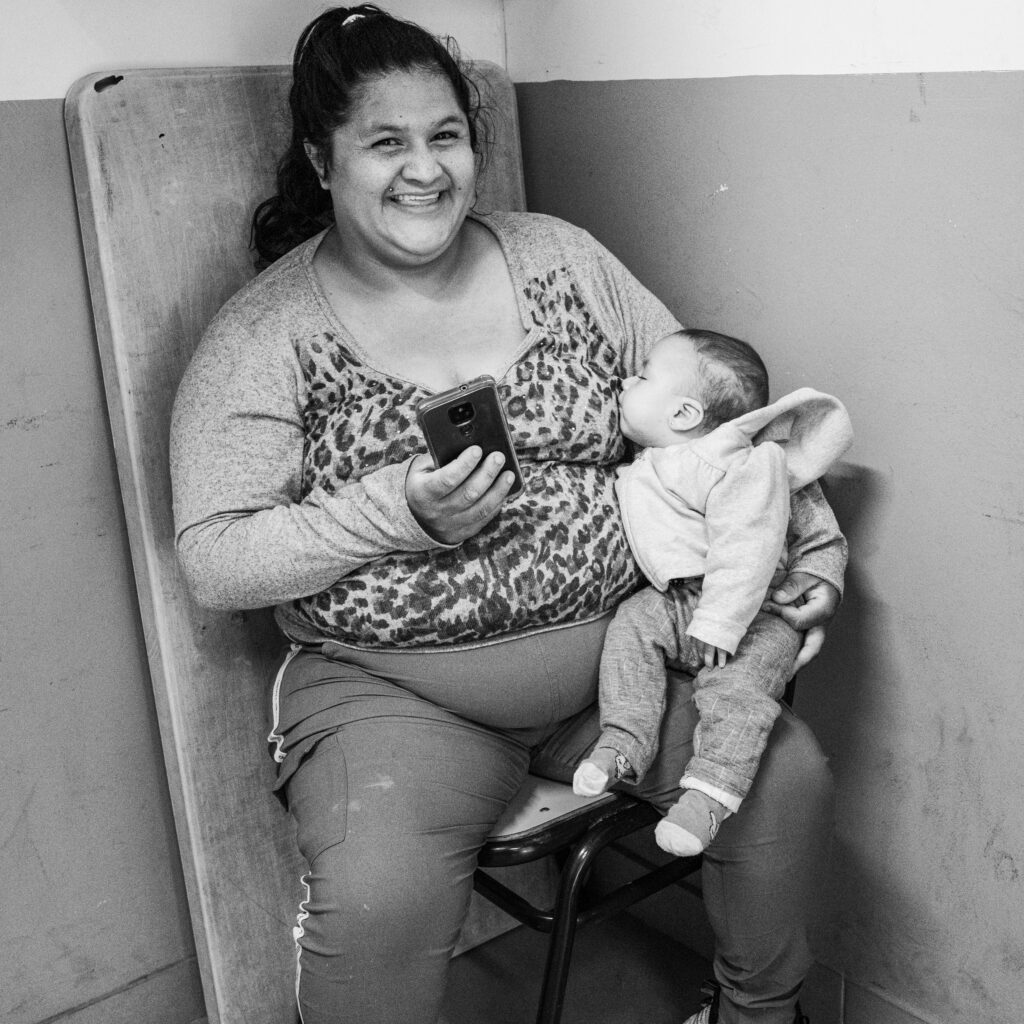
Coca and daughter Lunita
«My name is María Silvia, a student at Isauro Arancibia. I lived on the streets with my children for 21 years, and I was invited to this house on Paseo Colon and Indepedencia, where the school is located. One day, I approached them, feeling ashamed because I didn't have any decent clothes. They talked to me, helped me, and now my grandchildren and children come here. It's a beautiful place. I've taken part in many workshops such as silk-screening, sewing, recycling and espadrille making. I'm with Professor Fede in visual arts, and we're making paintings. I already have a good record, and now I'm starting to exhibit my paintings. Here, they (Isauro) don't care how you're dressed.
Everything's going well with the school, they help me a lot when I don't have a house, and I come to get food, fruit, vegetables.»
People living on the streets who go to school?
It's hard to imagine. Do these people I see sleeping in the street come here? Do they study? And they graduate?
I begin my report on Isauro Arancibia. Will they tell me their stories? Will I be able to overcome my prejudices and emotions?
As I enter, I come across a sign: «Welcome to the Isauro Arancibia Wrestling School.» Am I in a wrestling school? I look up and see a huge pair of shoes hanging from the ceiling. What does it mean?
I'm in totally unsuspected territory. So many questions, so many unknowns.
I ask where to find Susana Reyes, the designer. I'm shown the way to her office... and the discovery of a world apart begins.
Video of the entry : link to a video of the entrance
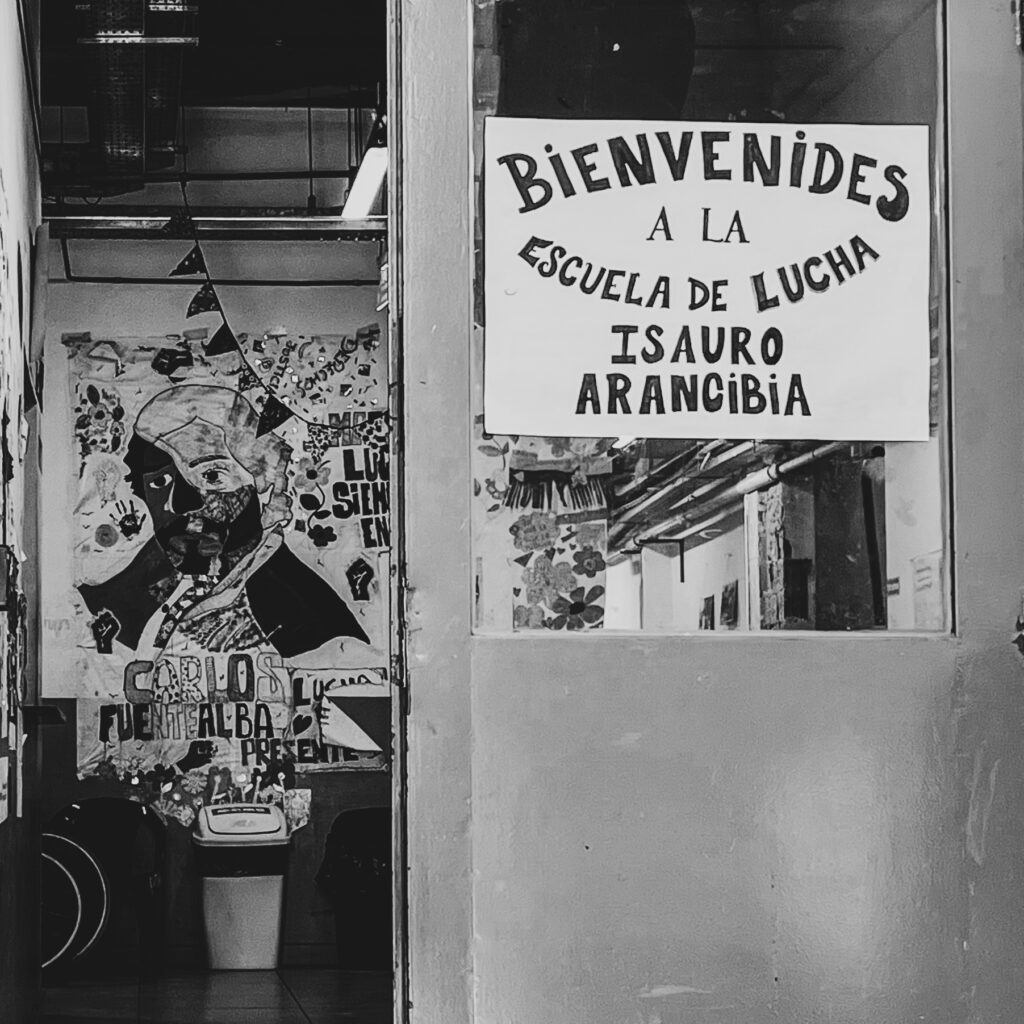
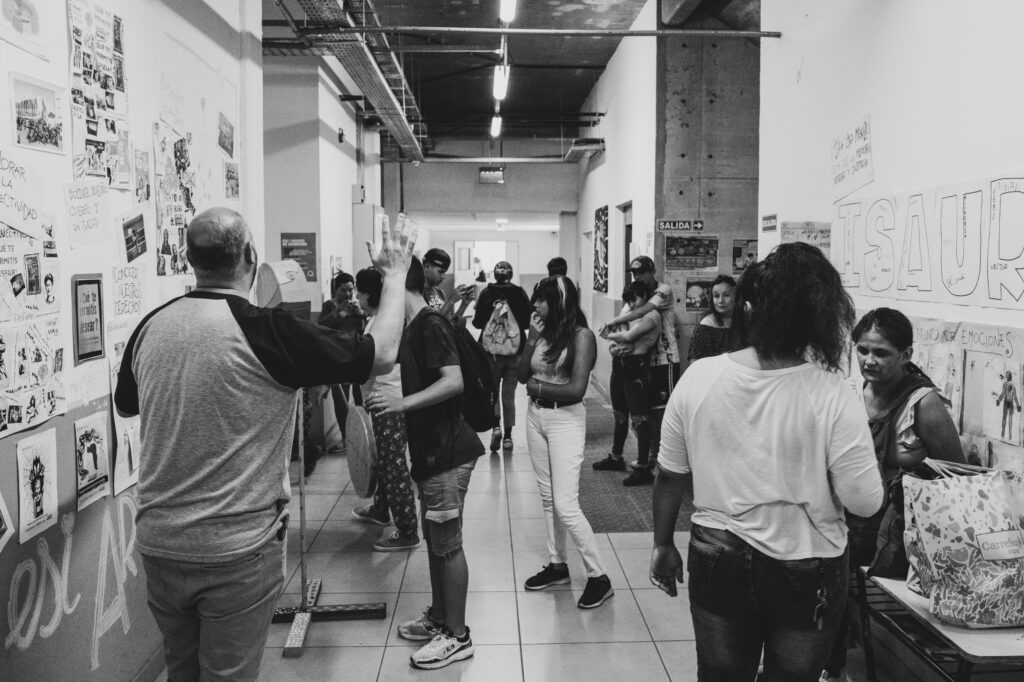
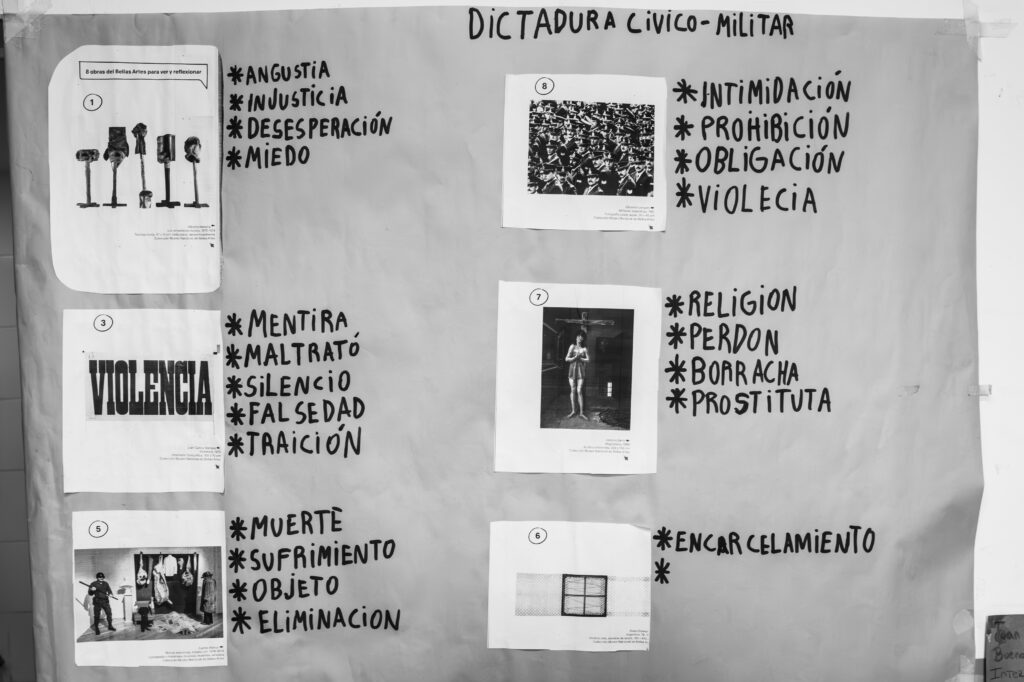
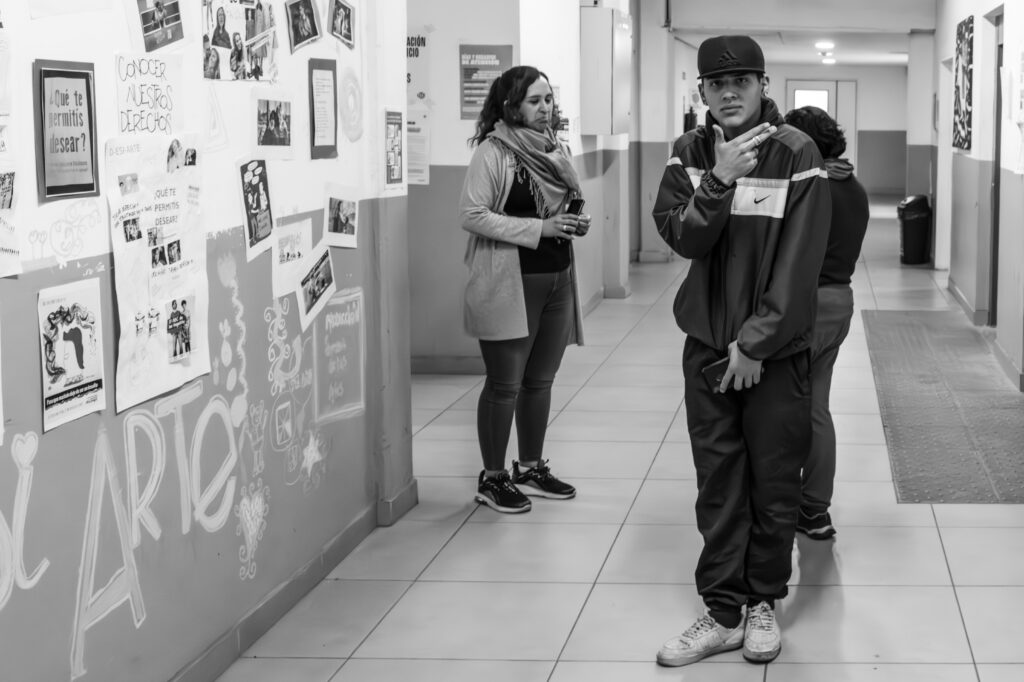
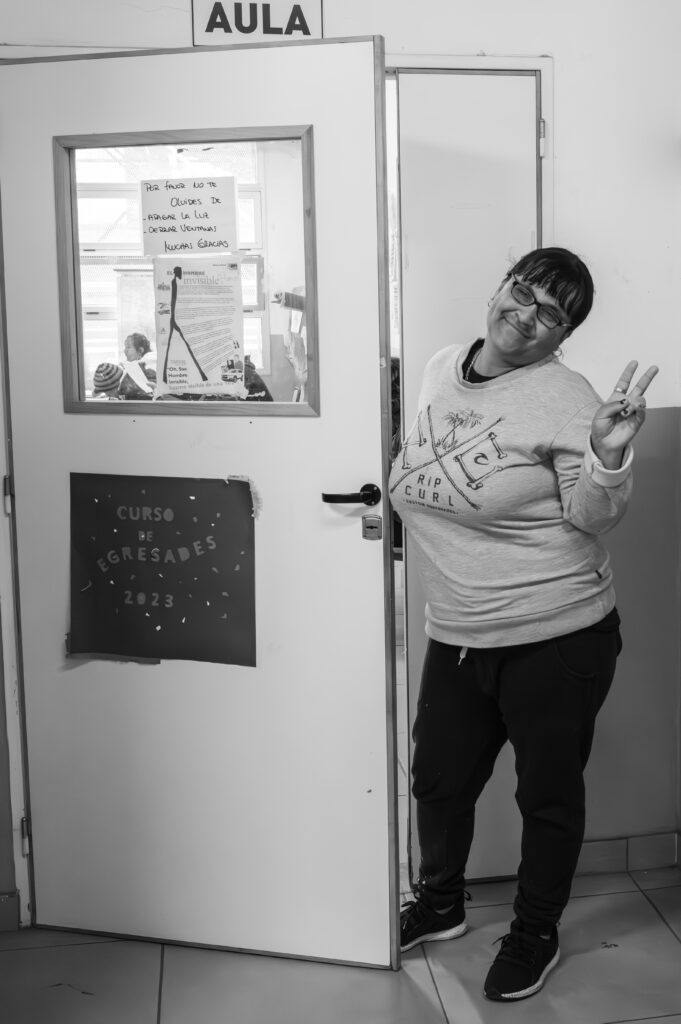
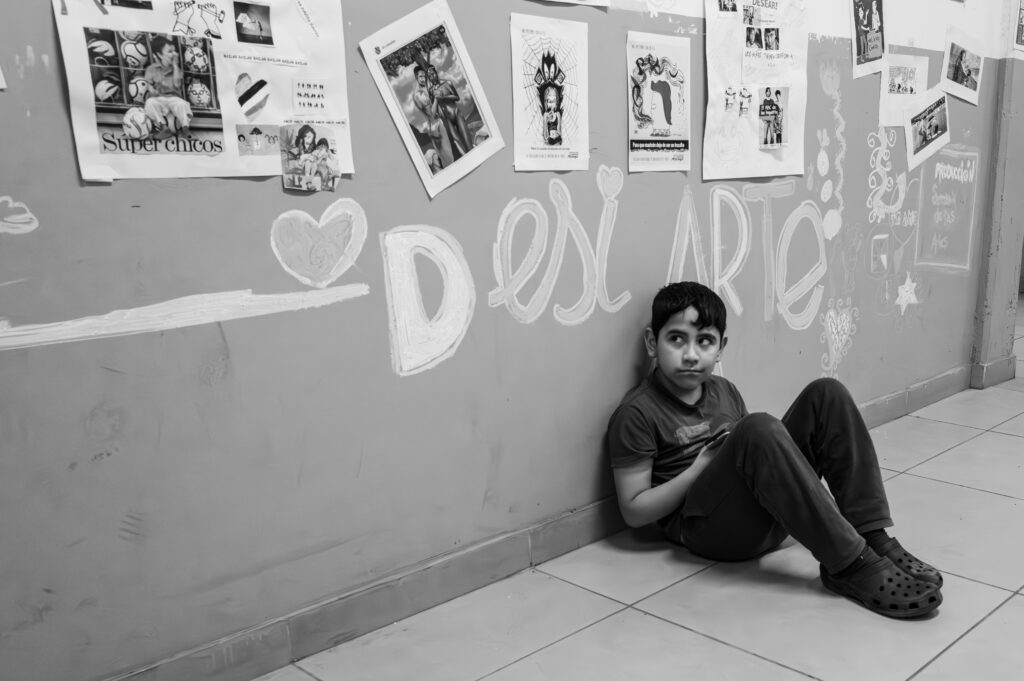
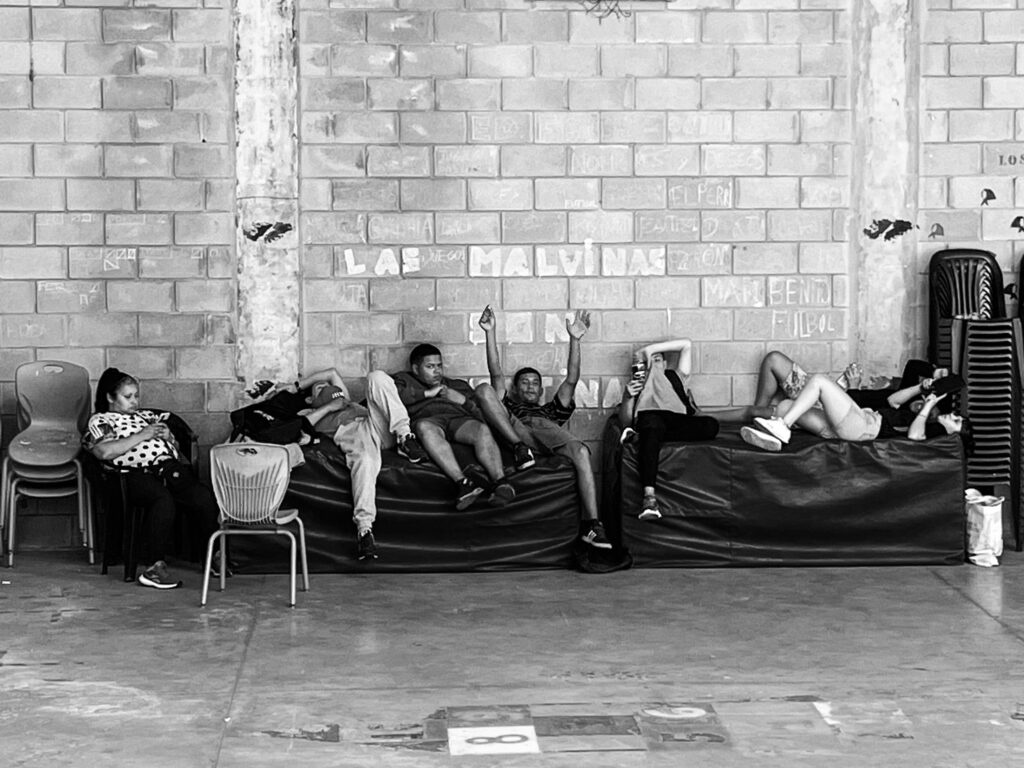
I'm taken to Susi's office, where she tells me the fabulous story of Isauro Arancibia.
Susana impresses me. A firm tone, clarity of expression, a warm smile, an inner strength and, at the same time, a lot of tenderness, a lot of humanity. A quiet strength. A pleasure to listen to.
PART ONE: THE STORY
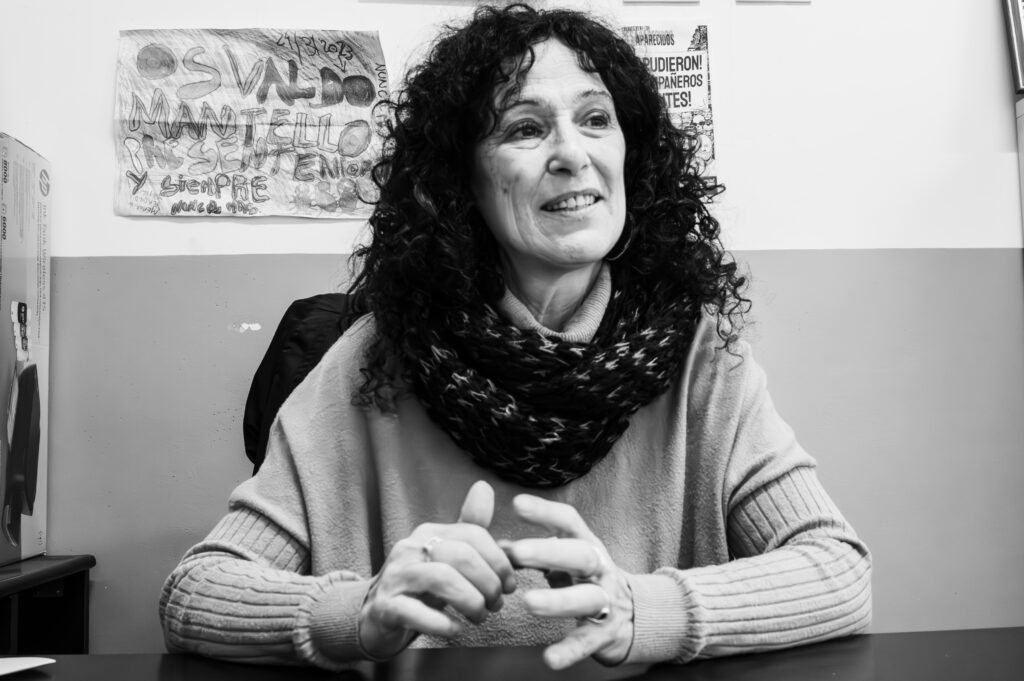
«The school wasn't built for people living on the streets. I started working as a teacher for young people and adults in an educational center, teaching literacy to the women of AMMAR (Association des Travailleuses du Sexe d'Argentine) in 1998. One day I was told, “Look, there are lots of children living on the streets.” After Menem's relentless neoliberalism, many people found themselves homeless and unable to read or write.
We went to Constitución, where they were lying on the ground. I told them there was a school waiting for them. The next day, a young couple arrived. Luis and Analía, 16, had been living on the streets since they were 13. And then they started coming.
That's how we started: in 1998, I was alone with 20 students. Today, the school has three levels of education, 130 employees and 800 students.
For me, it's a victory: the victory of a different pedagogy, a pedagogy of tenderness, of love, as opposed to the punitive pedagogy that excludes.»
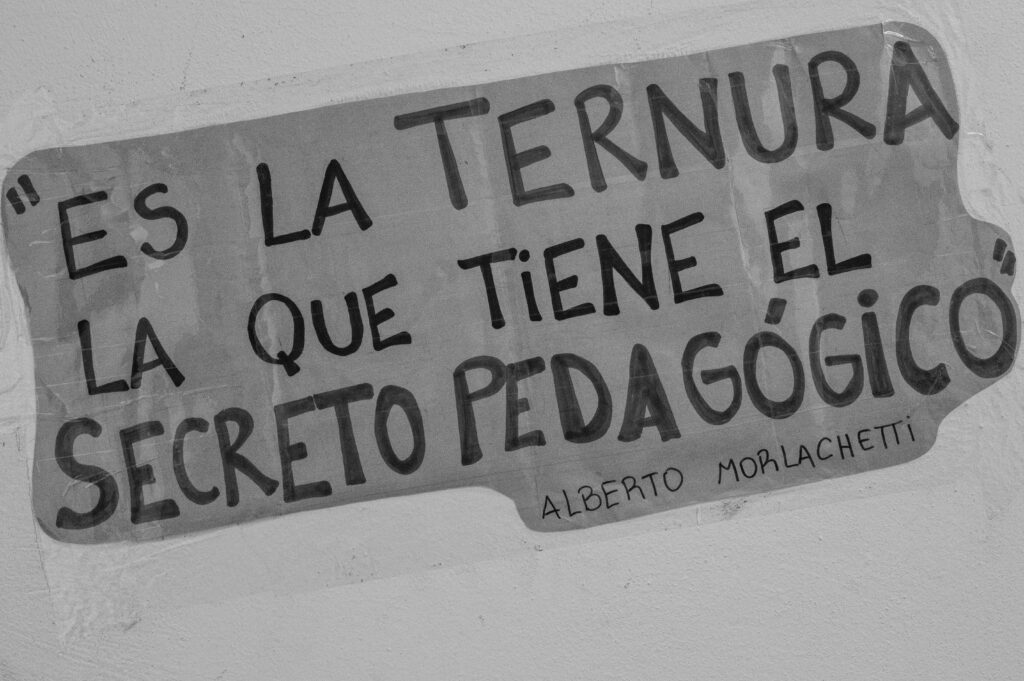
«Here, no matter how you arrive or what time it is, you'll always be welcomed into the school. If you arrive ten minutes before the end of class, you'll always be told, “Welcome, in ten minutes we can get something done. Congratulations on coming.”
The day before yesterday, I went to the University of Avellaneda to hand out diplomas to some of our students. They were living on the streets here, on Avenida Paseo Colón. We used to see them running around as children. They went to primary and secondary school here, and now they're at university studying computer engineering. That's victory.
As we tell our students at the end of each year, they are the ones who help us become better teachers. They question us, because how do you teach someone who lives in immediacy, who gets up from a wet sidewalk to come and study, who suffers social scorn, institutional violence? How do you say, “Sit down, study, if you study, you'll have a future”? This situation forced us to look for different forms, different strategies, and above all to learn a lot from them.»
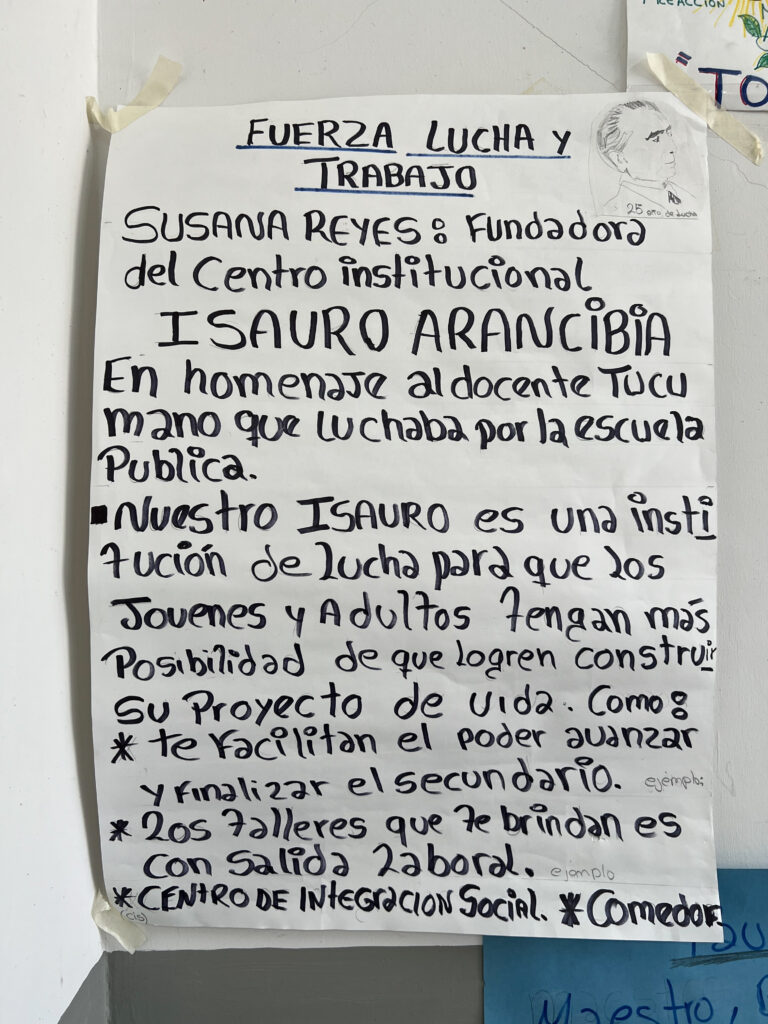
" What we do in this school (we do, because we're a team, a collective) is guarantee rights. Because education is a right, and if street people don't come to school, it's because this unjust system doesn't allow them access.
In 2012, we created the Associazione Civile Isauro Arancibia, thanks to which we were able to set up a hostel, where 18 young people from the school live. The idea of this home is that they can reflect on their life project, and that by relying on this space, they find work, get out of the consumption of products, and have a warm place to stay, with meals, love, and community life. We also have a project in the La Boca neighborhood, where we'll be able to house 30 families if we can raise the necessary funds.«
In addition, the Civil Association has helped finance workshops and other activities.
«Everything is educational. For example, in the hostel, we not only offer a safe place to live, but they also learn to live together, to cook, to sit at the table and talk, and to connect with their companions. It's a space where they can project themselves into the future, get away from consumerism and find a job.»( repetition with the paragraph above?)
Tall this has been set up in a very gradual and artisanal way.«
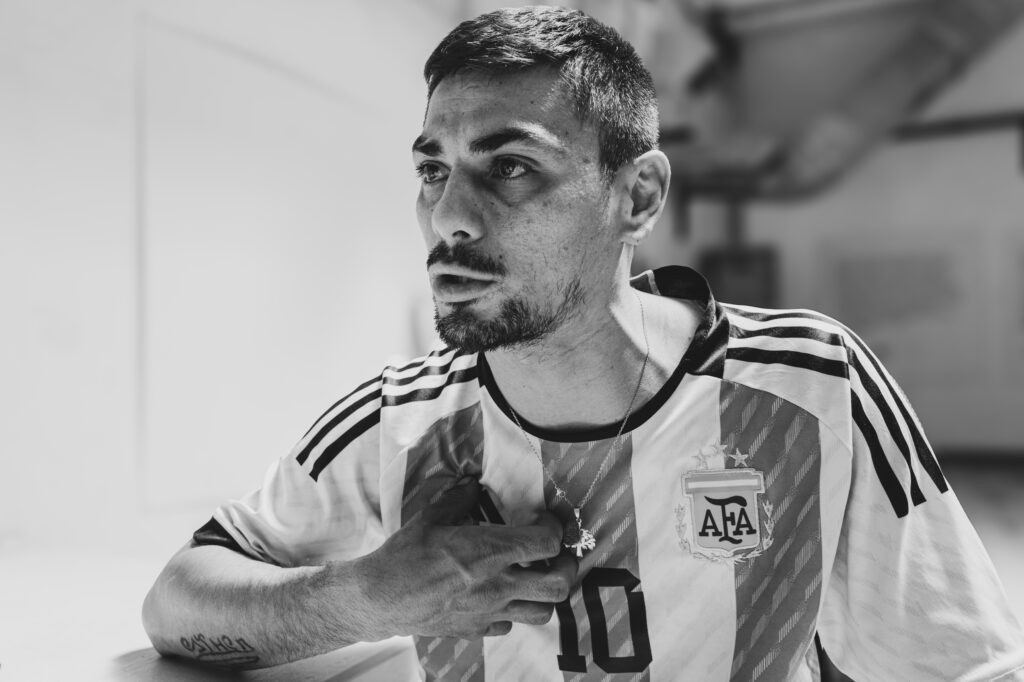
«It's all born of horror. Susi is a woman who has suffered a lot. She was locked up for three months when she was pregnant. Her husband was killed. In those days, there was a lot of horror, a lot of resentment. Like Isauro Arancibia, he was a great teacher who fought for the rights of sugarcane workers and their families. He was killed for wanting to do good and fight for justice.
That's why we need to recover Isauro's shoes, which were stolen from his corpse. A teacher can't walk barefoot in heaven.
That's what's happening at Isauro: turning pain into love.«
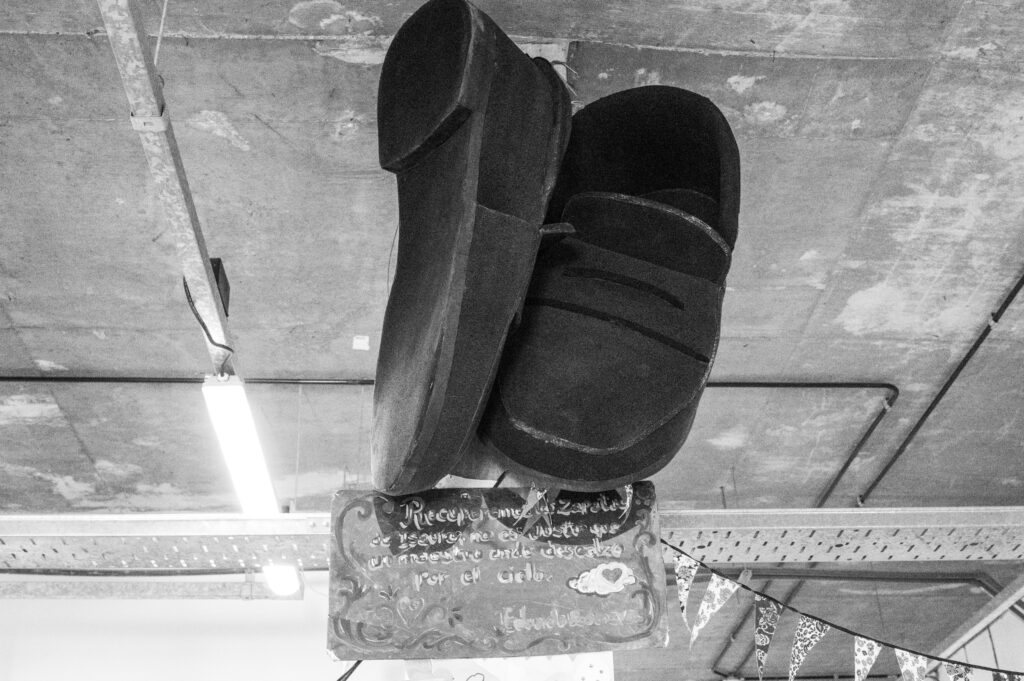
PART TWO: Isauro's three pillars
Impossible to ignore, since all the teachers and managers interviewed unanimously insisted: «The three pillars of Isauro's project are Education/Art/Labor. »
The work
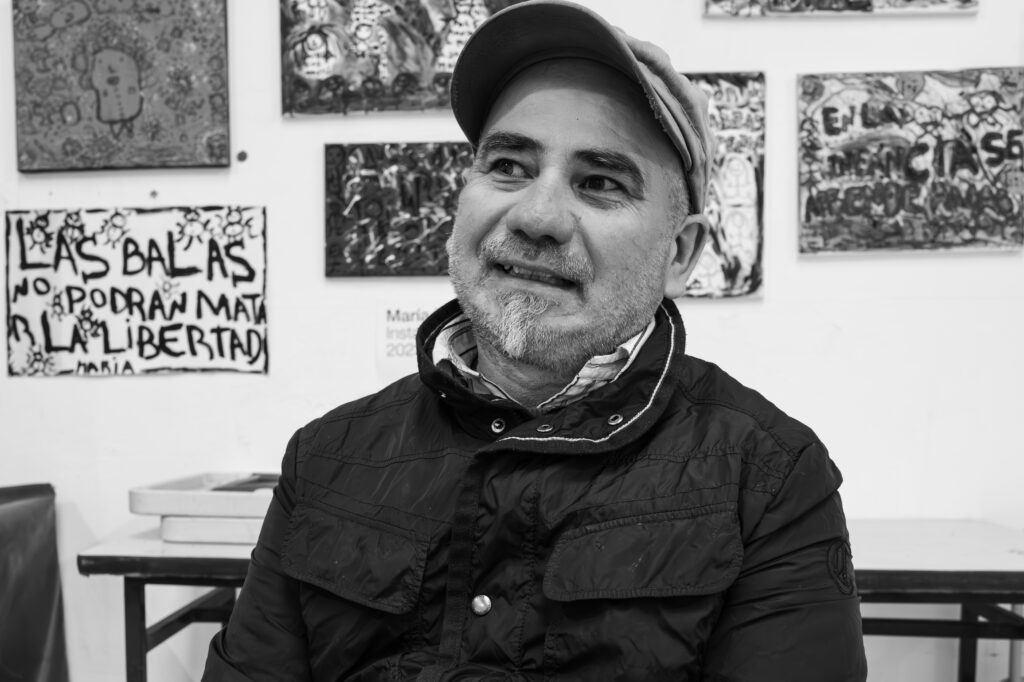
«When we started the school, we didn't materially have the possibility of having a health team, a work team or a housing team. But in our heads, we knew we wanted to move in this direction, because our pedagogical concept is based on three pillars: Education, Art, Work. This is what a person coming from the street needs to reinforce his or her educational path, start to have a life project, and create the conditions to continue studying.
The problem is how to attract young people to the school project, how to make them understand the importance of spending more time here and less on the streets. Ultimately, how to tip the balance in favor of the school rather than the street.»
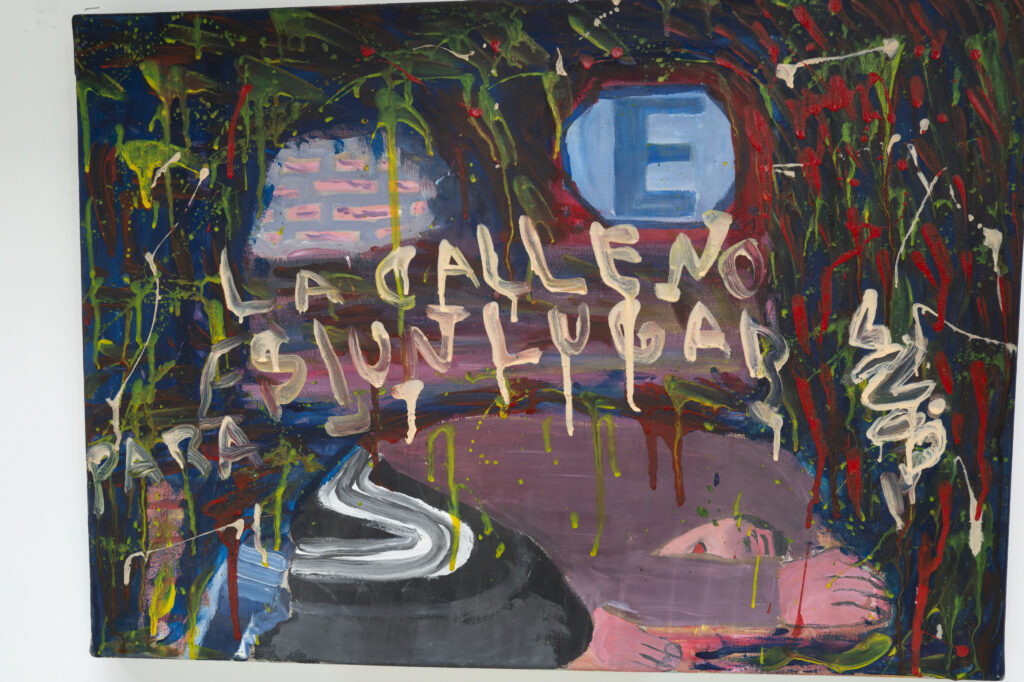
«We started fighting to introduce a compulsory extra hour devoted to art after school. We managed to get a workshop offered outside class hours, paid for by the state.
So people who study in the morning can stay on after lunch to train in work-related courses to learn a trade. That's how we started with the bakery, which is now very well set up, but began with two microwaves. Bicycle repair started with a donation of bikes in poor condition that we repaired and redesigned, and the eco-bag workshop came into being 10 or 12 years ago, along with hairdressing, textile art, etc.»
«We've always fought against society's perception of street kids as dangerous. We see them as young people in danger. Quite the opposite. "
The Art
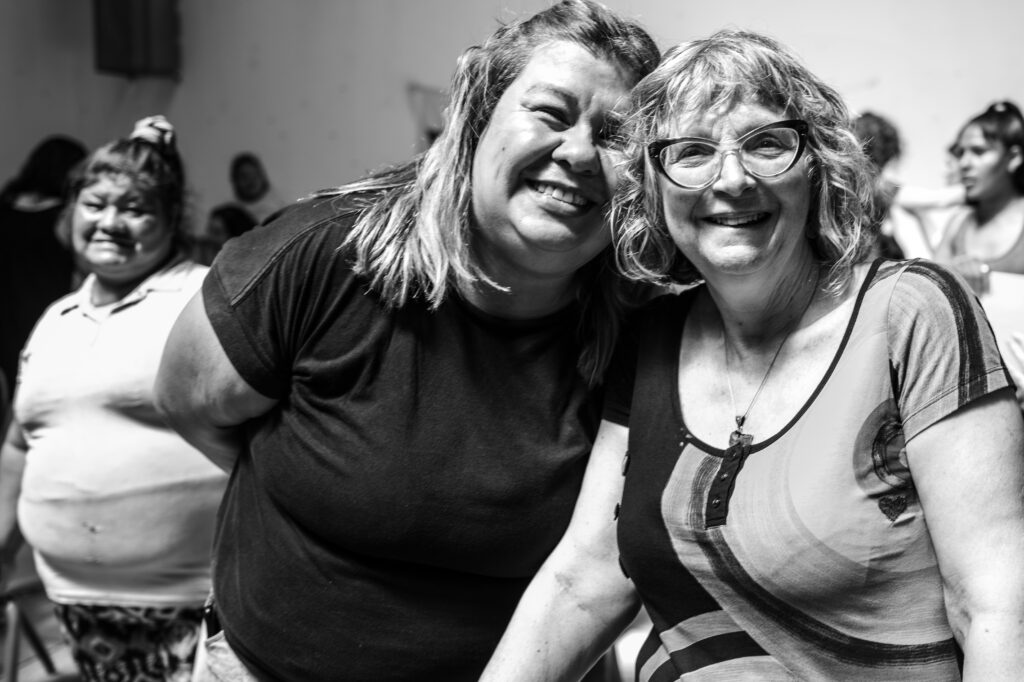
«We realized," explains Lila, that art is as important as health, nutrition or recovery. These young people and adults arrive with very traumatic histories, and the only way to transform these traumas into something positive is through art, what we call the right to metaphor.
In fact, some students don't access formal reading and writing, but express themselves through art. For example, Yoli is an undergraduate who doesn't get started with writing. I've worked with her for years: one day she's writing, the next she doesn't know. The marks left by exclusion are indelible. Which, surely, combines with nutritional deficits. Who knows how much she's been through in her life.»
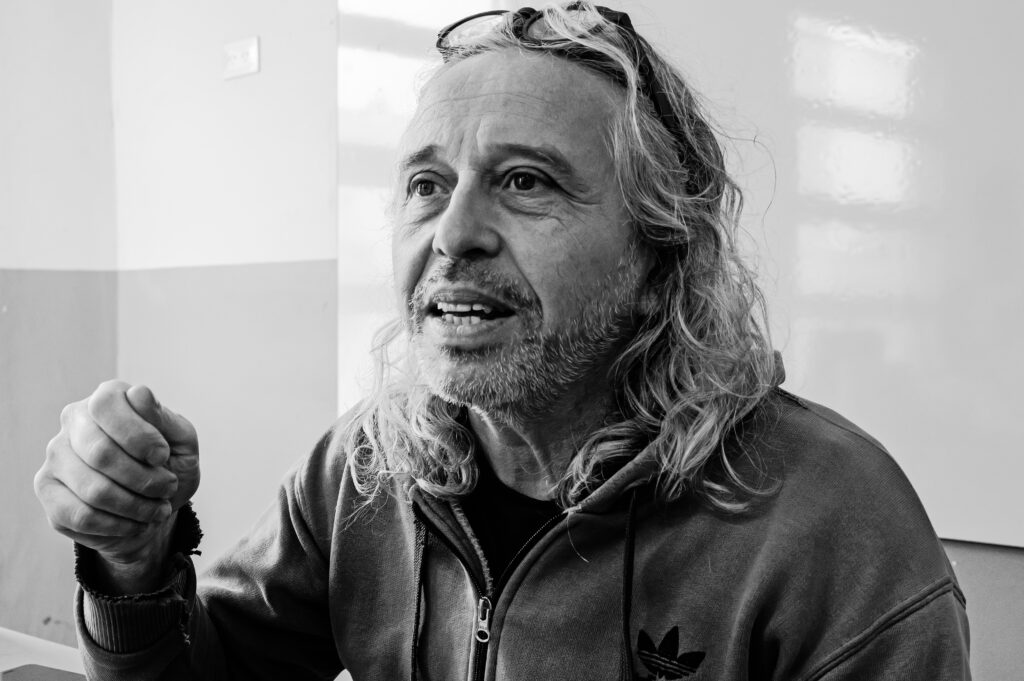
«When working with populations in situations of confinement in prison or coming from the street, Federico recounts, I realized that they have a great richness to express in art, the result of their very strong life stories. These situations lead to unique creative resolutions. More street means more experiences, more observations of others.
I think street people have a very broad perspective on society. It's like being on a terrace and seeing the truth from a completely different angle, with an amplified vision. For example, the young man or woman who lives in a shantytown and goes out to collect cardboard boxes in Caballito, Palermo or Recoleta knows everything that goes on in those neighborhoods. They can tell you all about an Alfa Romeo or an old car. It's a vision of society ranging from the simplest to the most elevated.»
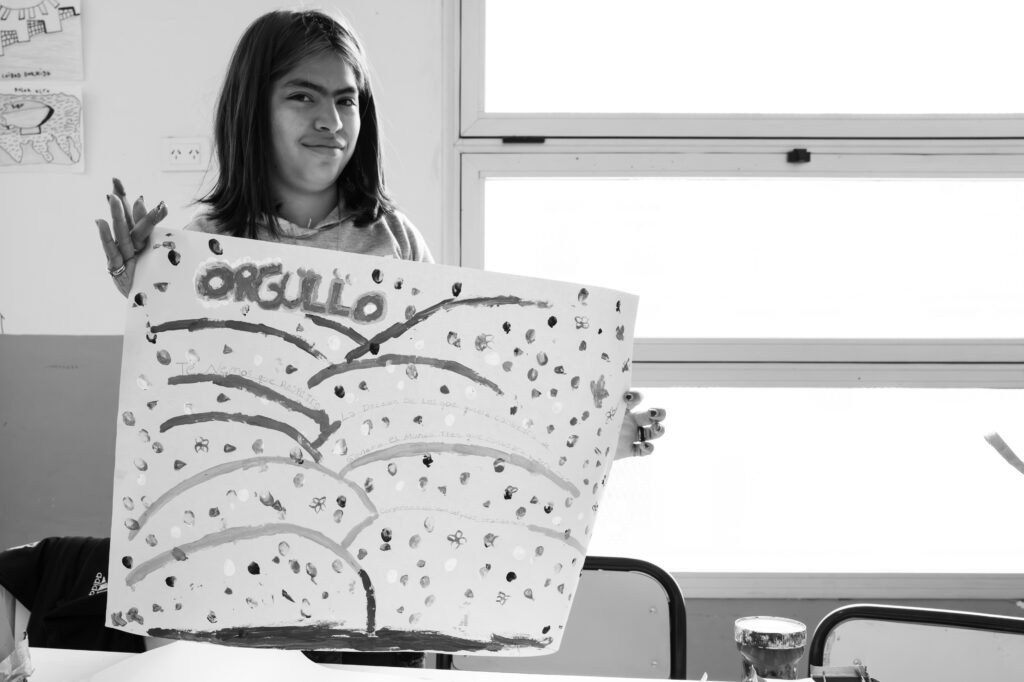
«Faced with this situation, teachers need to adopt a very humble, very respectful attitude. I realize more and more that the best task a teacher can do is to facilitate, to create a space for production and reflection. My greatest merit was to keep quiet when María was at her first class. She stood in front of a sheet of paper with a pencil for half an hour, without moving. I wanted to say to her: “Do this, try this.” But I kept quiet. I understood that I had to wait for the process to happen... and it did, with much more than I could have imagined.»
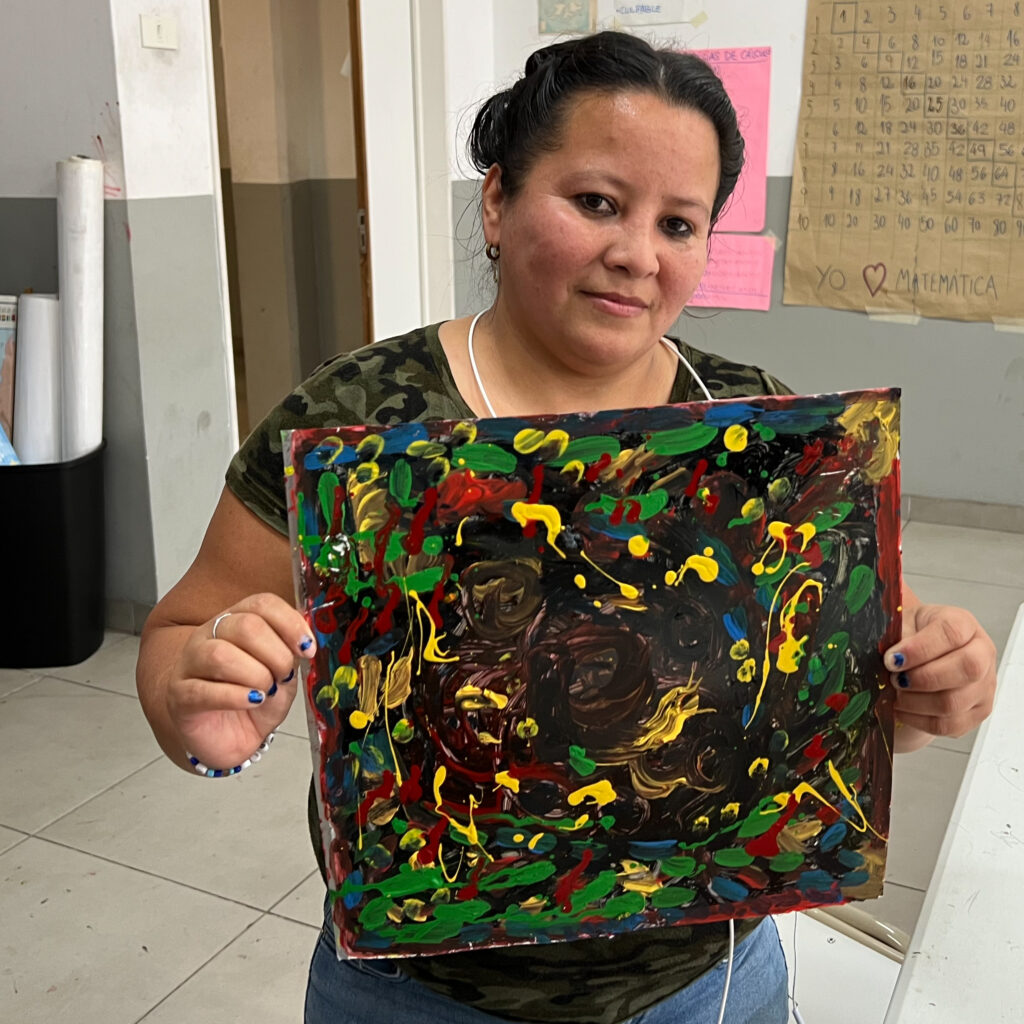
«Maybe these artists create things that don't satisfy us, with the education we've received. So we say to ourselves, “Well, I have to learn too.” If you see Yoli painting, you can't believe it. She has an incredible level of composition. She creates works that people like, that people want to buy. Why treat her like “the poor girl” instead of saying: what you're doing is great, it's art!»
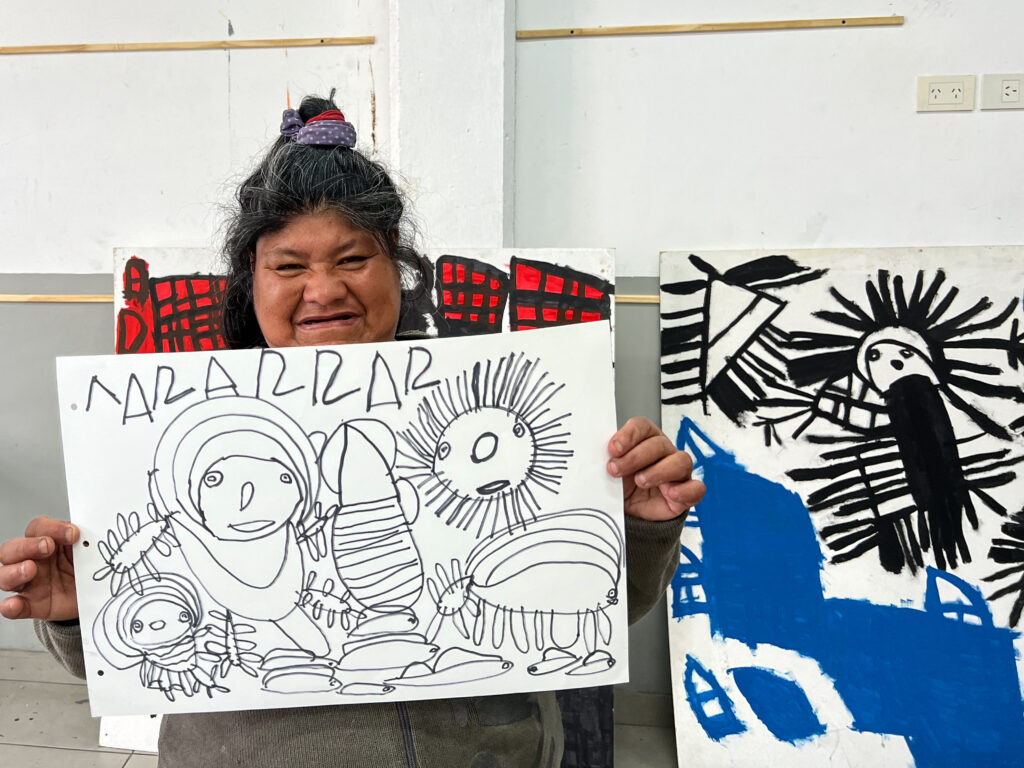
León Ferrari art gallery
«We believe, says Susana, that art is transformative. In the art studio, students produce impressive work, so much so that we've set up a gallery, inaugurated in November 2023, where we exhibit and sell their work. Our art gallery is called León Ferrari. In partnership with the Ferrari Foundation, we organize auctions.»
«That's why,» adds Pablo, "today Visual Arts are also part of the Work section. We consider that our students' artistic productions are also works, from conception to realization."
«The art gallery brings together Isauro's three educational pillars. There's educational content, artistic content, and the opportunity to sell works by Isauro artists like María Brizuela or Yoli.»
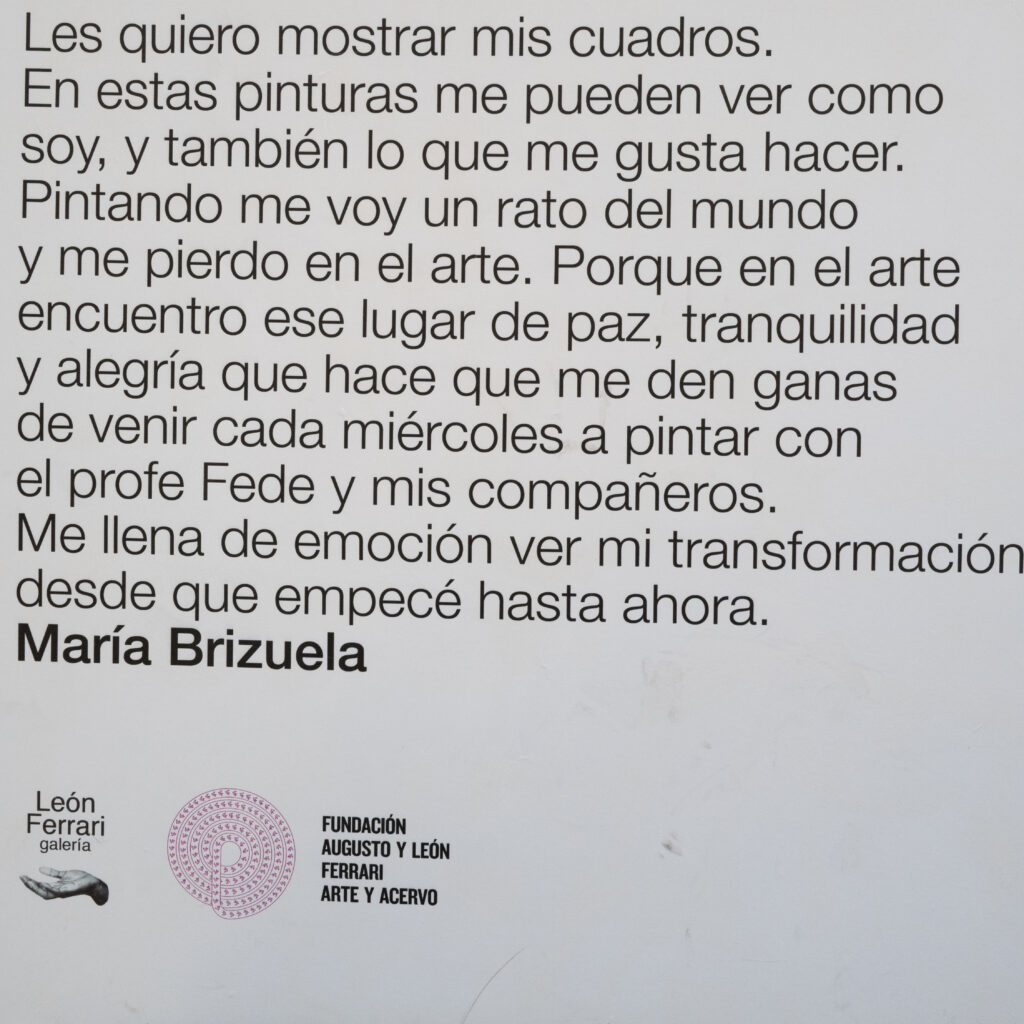
«María sells her paintings for around 60,000 pesos. She finished elementary school and is in high school, but she wasn't able to come much this year because she was taking care of twins for a salary of 30,000 pesos a month. So selling her work is very important to us. She can say, “I make a living from my work”.»
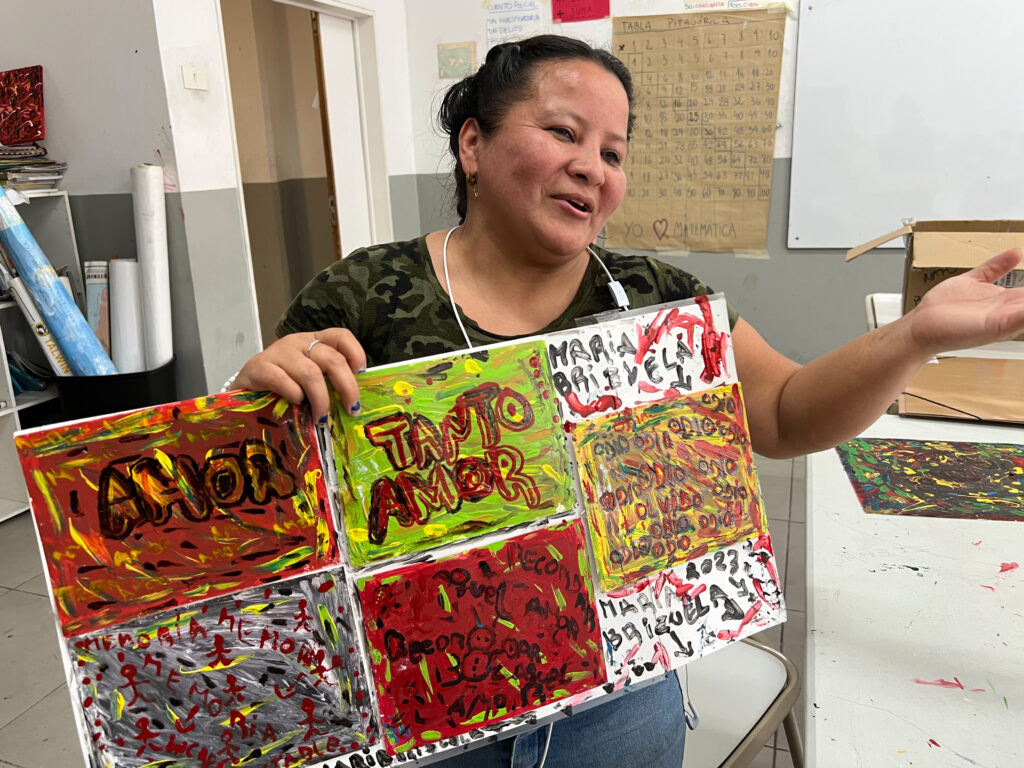
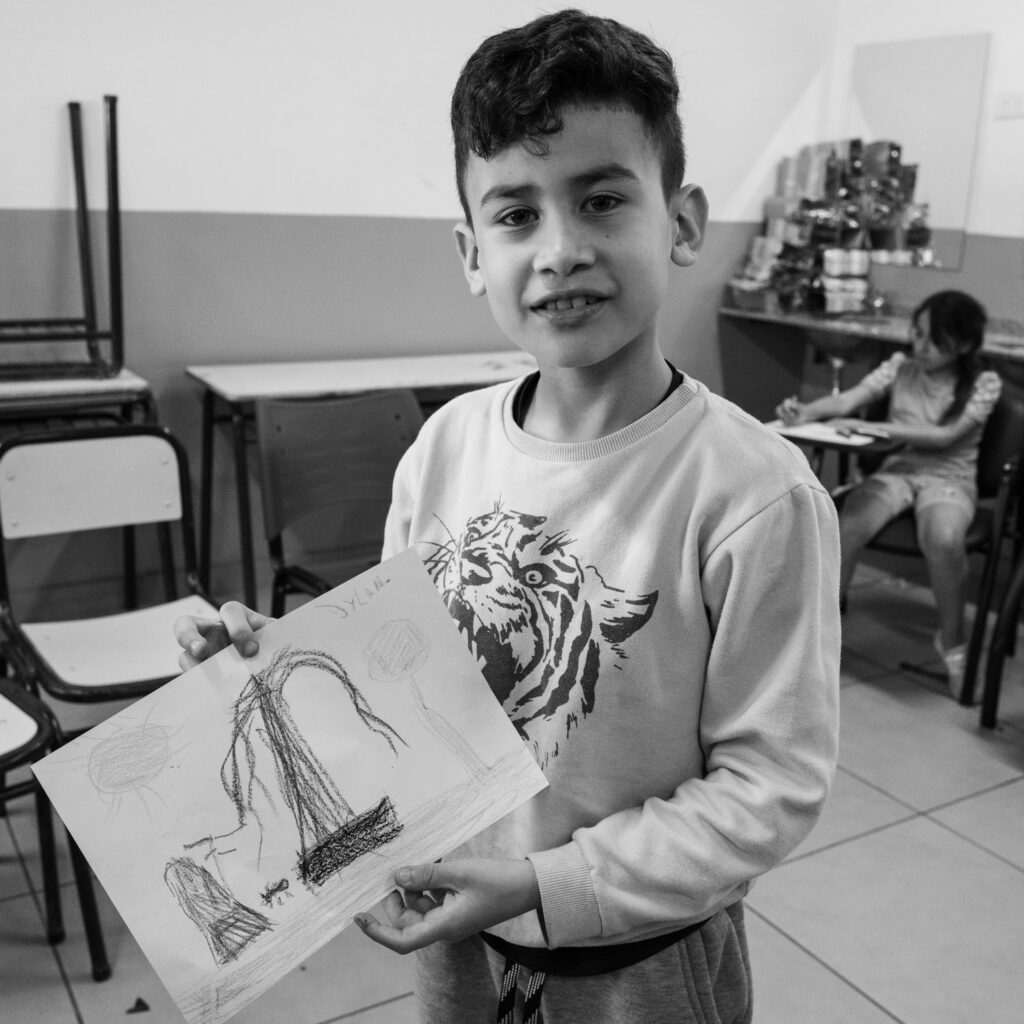
PART THREE: Testimonials
To understand Isauro, it is necessary to understand what it means to live on the streets, and to what extent the encounter with Isauro opens up the possibility of building another life project. That's why I think it's essential to listen to these testimonies.
David, the metalhead
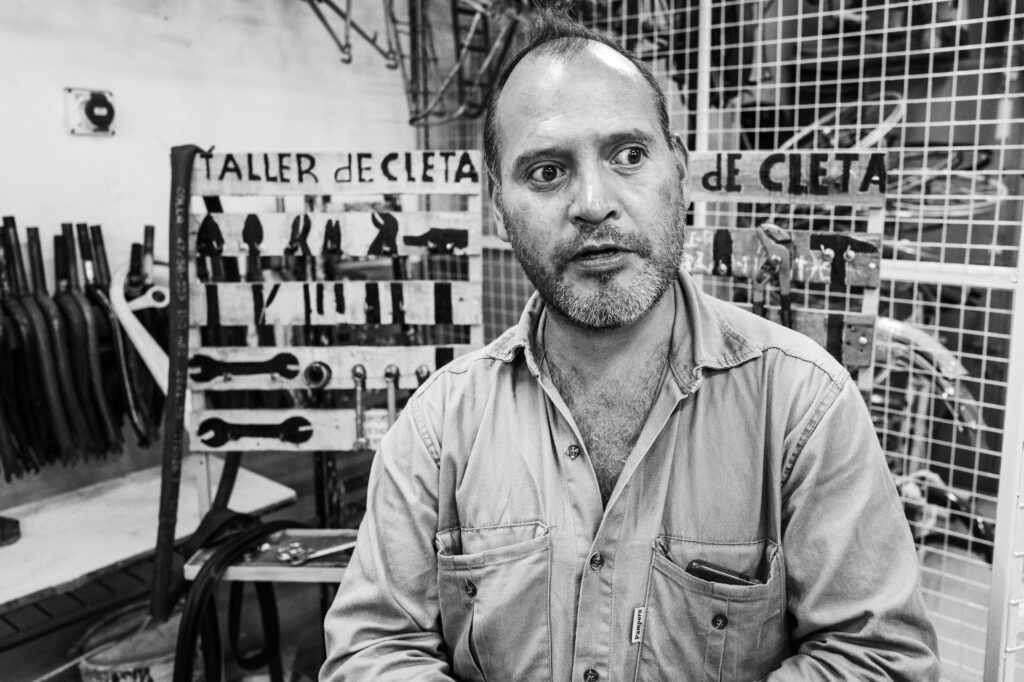
«I started coming to Isauro Arancibia School in 2018, where I started primary school, to learn to read and write.
I was a social misfit, and I still am, but now I'm better educated. I can take you back in a politically correct way. A la Messi («What are you looking at, idiot?»), instead of coming out with violent insults. I finished primary school, then I started secondary school.
And now I'm a teacher in the bike repair shop.
When the pandemic arrived, it interrupted everyone's cycle.
In 2022, for the first time in my life, I felt lonelier than a dog: without a sense of smell, blind, deaf, dumb, without any direction. So I set myself a goal: to pay more attention and get through the year. I said to myself, “If I don't pass this year, I'm quitting everything.” And I did. That's why I'm here.»
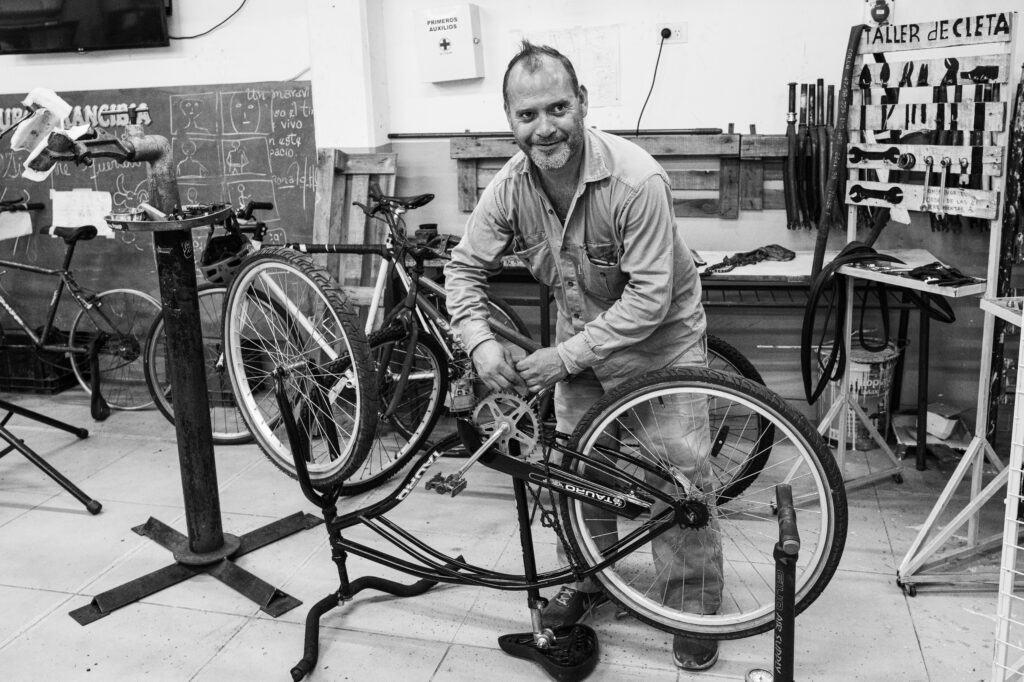
«Life automatically teaches you how to survive, just like in the jungle. If you're hungry, you manage, you ask: “Do you have a cookie, a piece of bread?” It's not easy. Because, when you spend a whole day freezing or under a blazing sun, if you manage to get a bit of food, you say to yourself: “Objective achieved.” But afterwards, you ask yourself: “What now?” »
You have to define a lot of things when you're on the street. You walk aimlessly, back and forth. Night falls, it's cold, but you're still there. No one comes, and uncertainty begins to torture you. One day, you realize that you've “screwed up”, as they say, and you say to yourself: “What a disaster! Why? Because when you're ignorant, as I was, you make the wrong choices. I've found myself in terrible situations, almost dead, in intensive care, and so on. I'm alive because neither God nor the Devil wanted me. This is my last round. If I have to fight now, I'll do it on equal terms. Now I have more tools to defend myself.”
«They call me David, the metalhead. Do you know why? Because I listen to national heavy metal.»
Penélope
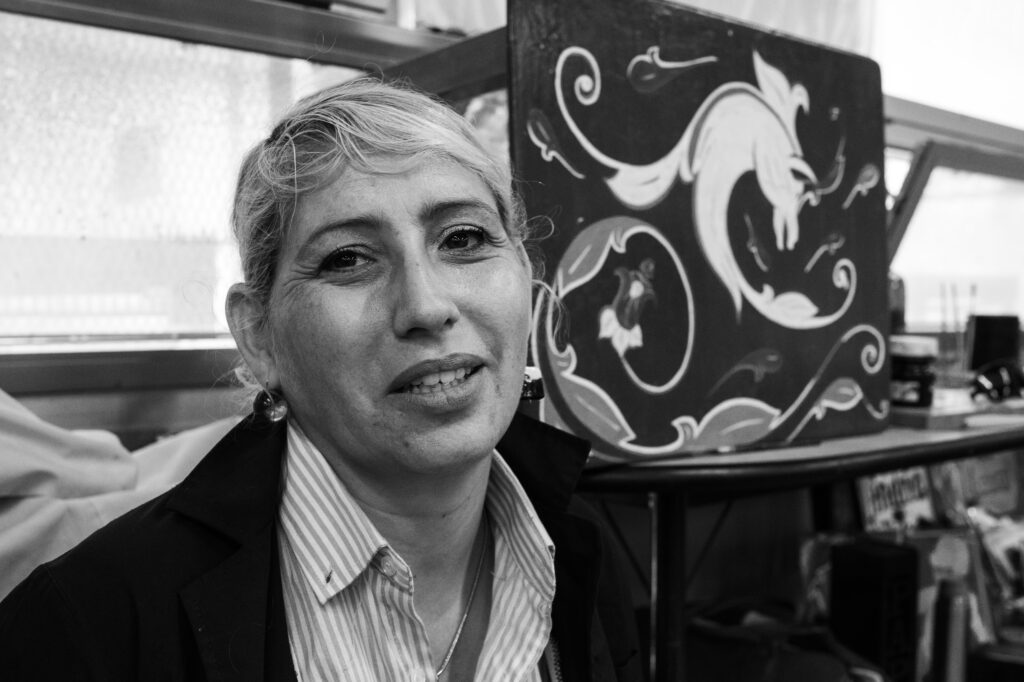
«We lived in the camp at Paseo Colón and Independencia. We were street people: the dirty mattress, the clothes, our belongings, everything was wet. About 10 years ago, teachers came to give us clothes. I saw how, from nothing, a companion who lived under a bridge on a soaked mattress is today studying to become a university professor.»
«My children didn't go to school. They first entered a remedial program. Once they were ready, one was admitted to kindergarten, the other to primary school. My daughter suffered a lot of discrimination because she walked barefoot and didn't speak. When I took her to school, I was told she couldn't go in without seeing a psychologist. She came here, and they welcomed her with a hug, a pair of shoes, and an upgrading program. Now she's finishing high school.»
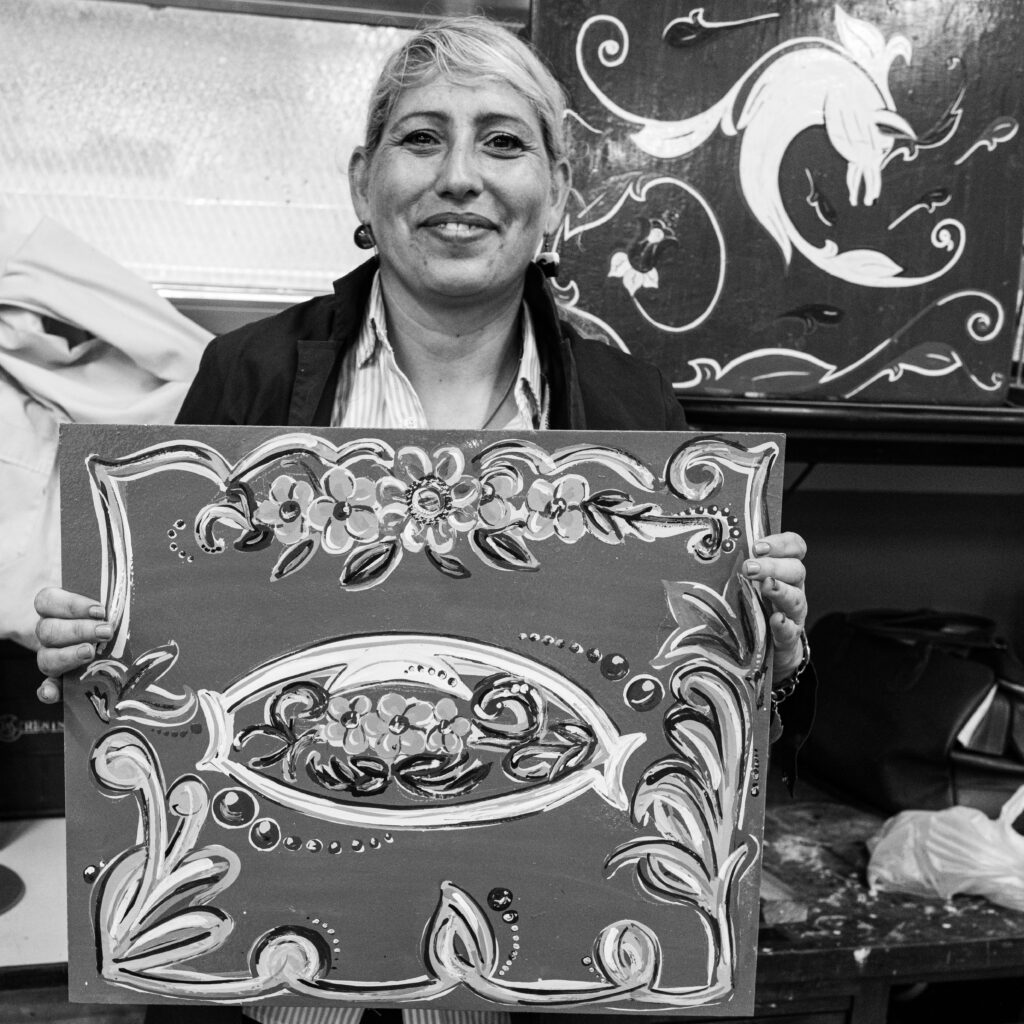
«I have seen the growth of many companions. Mariano, for example, had a childhood marked by over ten years of abuse and the street. He looked like a senile old man. Today, he's my companion. He was in the paint shop and now he's in the bike shop. He looks like a different person.»
Occupation:
«Reading, writing, books, workshops... keeping a full life. You get up from the mattress, and from the street mattress, you go to school. You come and have breakfast, and then you go and study with your classmates in the classroom. Then, if you have free time and don't want to go back to the street in the afternoon, you can go to the workshops, keeping your mind constantly occupied.»
«I have faith in God and I know He gives me the strength to get up tomorrow. Pulling a family off the street through education works. I'm living proof that you can pay the rent with effort, that you can get a degree through education, and that you can keep a family together.
In the beginning, there's a kind of resistance. Rebellion against obedience. You walk into a classroom and think, «Everyone's looking at me.» You think they're going to judge you. But these are ideas you put into your own head, because you're sabotaging and limiting yourself because of habit. Habit kills, some say. Street habit is toxic, it contaminates you, and it's hard to get rid of it. And how do you get rid of it? By coming here every day to experience a different rhythm. It costs you, because you say to yourself: «These four walls bore me, I feel locked in here.» But you have to realize that the pressure of the street is far worse than that of working or studying within four walls. On the contrary, coming to school is freedom. It's the process of understanding that freedom is not anarchy.
It takes effort and courage. Because a coward runs away; he doesn't care about anything, he doesn't care about his life. It takes courage to say: «I have an identity thanks to what I do. Before, I was a street kid, abandoned, and now I'm a student, I'm part of a work team, I'm an honest worker. And that's my reward: I got it by studying and working.»
When you start to love yourself, there's a change in your hygiene, in the way you walk. You no longer look at the ground; it's something else. You no longer arrive distrustful, because the street has taught you distrust: you have to sleep with one eye open. These are terrible nights, nightmares. So you arrive distrustful. And what gives you confidence is support, example and love.»
The story of Professor Horacio Ortiz
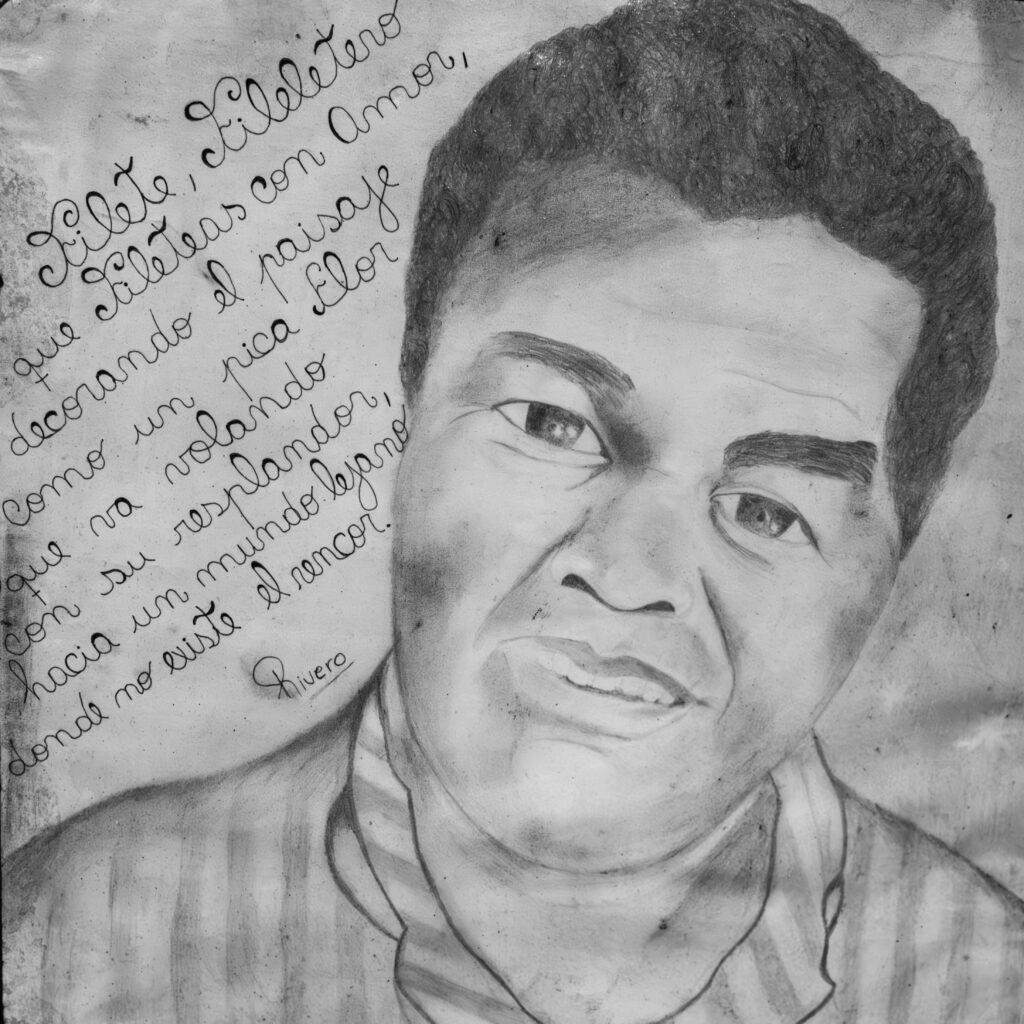
«Professor Horacio Ortiz passed away last year. He had a problem at a fair where he was assaulted twice. The first time, he survived; he taught another year, but they attacked him again and killed him. It's always the same on the street: envy. Some people will applaud you for changing, and others will want to see you dead because of that envy.
the first time; he lost half his skull. It was a living miracle, because he continued to teach, even with half a skull. And he taught even better than before, because he said he'd been to heaven, seen Jesus and God, and talked about God's love.
That year was like a paradise for us, because before he was very strict, but after what happened to him, he wasn't so hard: he was more affectionate than ever. That year, he was in a kind of permanent emergency, because he said he had to go back.»
“I don't like this world, I was up there and they sent me back here to talk to you,” he said. .
NOTE Fileteado porteño is a decorative painting style that developed during the Art Nouveau period. In Buenos Aires, it emerged after immigration and is present in La Boca and many other places. Here, we have a fileteado workshop that we've integrated into our bike production.
“God speaks to you with a whisper or a blow. Don't be as stubborn as I am: understand with the whisper, not with the blows. Follow the example of those who have already been through it all.”
Horacio's dream was to set up workshops for making «fileteados» (bicycles decorated with colorful scrolls) and to make a tour of all the emblematic tango venues where fileteados can be found.
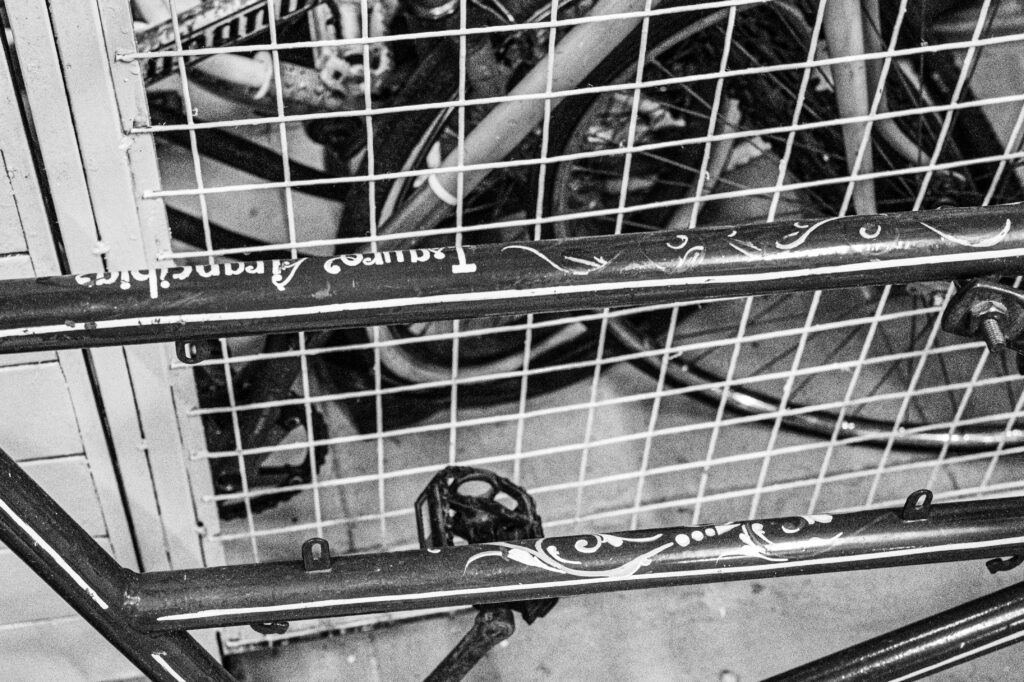
Horacio passed away at the age of 60.
DAVID BELLO
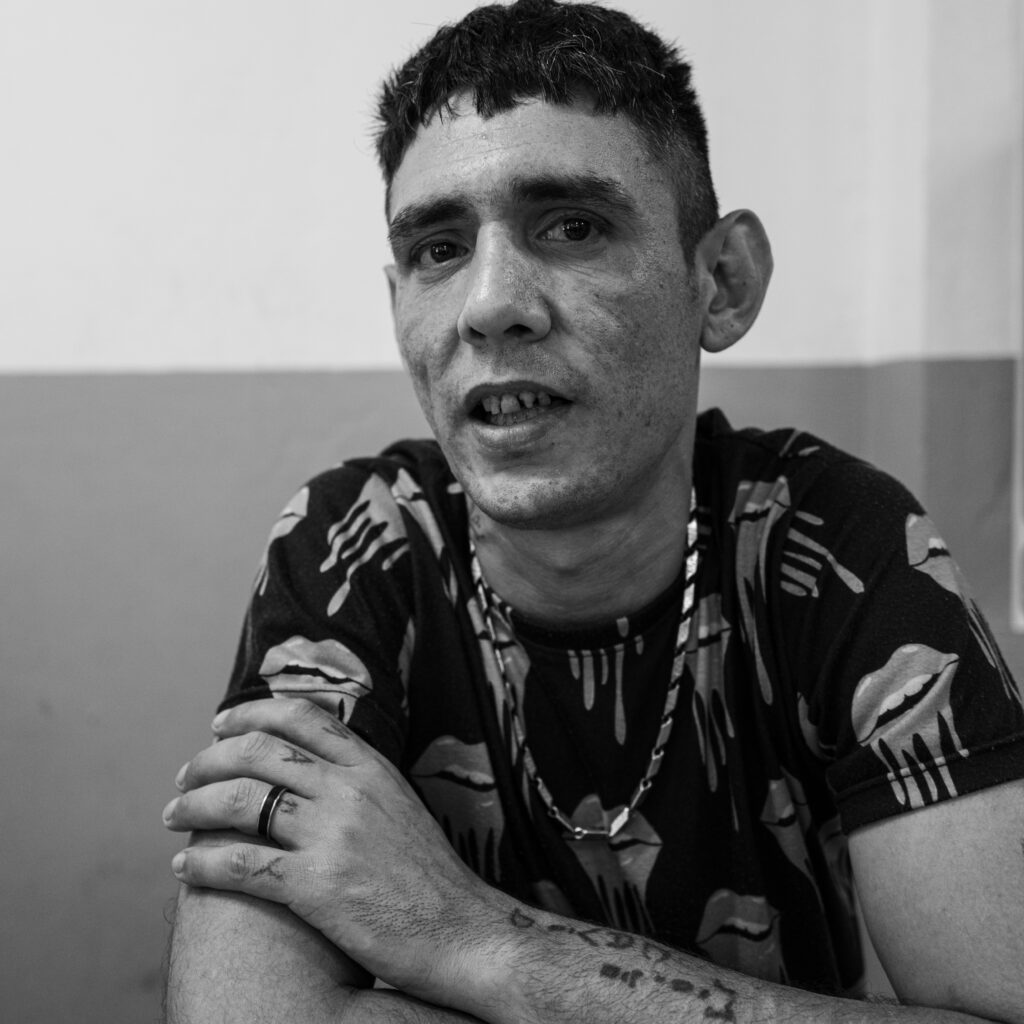
«My name is David Marcelo Bello. I'm the oldest student here: I've been coming for about 19 years.
I was at Constitución, and started when this school wasn't even Isauro yet. We studied in a courtyard, where the blackboard was the floor and the chalk pieces were hollow bricks. The teachers wrote on the ground, and we copied. It was quite a struggle to get a building, a blackboard, a box of chalk and notebooks.
I grew up on the streets from the age of 10, and was on the streets for 22 years.
My dream, above all, is to finish high school, and I'll probably succeed next year. After that, I'd like to train as a social worker or therapeutic accompanier, so that I can help the many people living on the streets.
I want the people who represent us - presidents, deputies, senators - to understand that we're not delinquents or lost people, but people with dreams. We just need them to come closer and listen to our stories. Because many people judge and discriminate against us without knowing our backgrounds.»
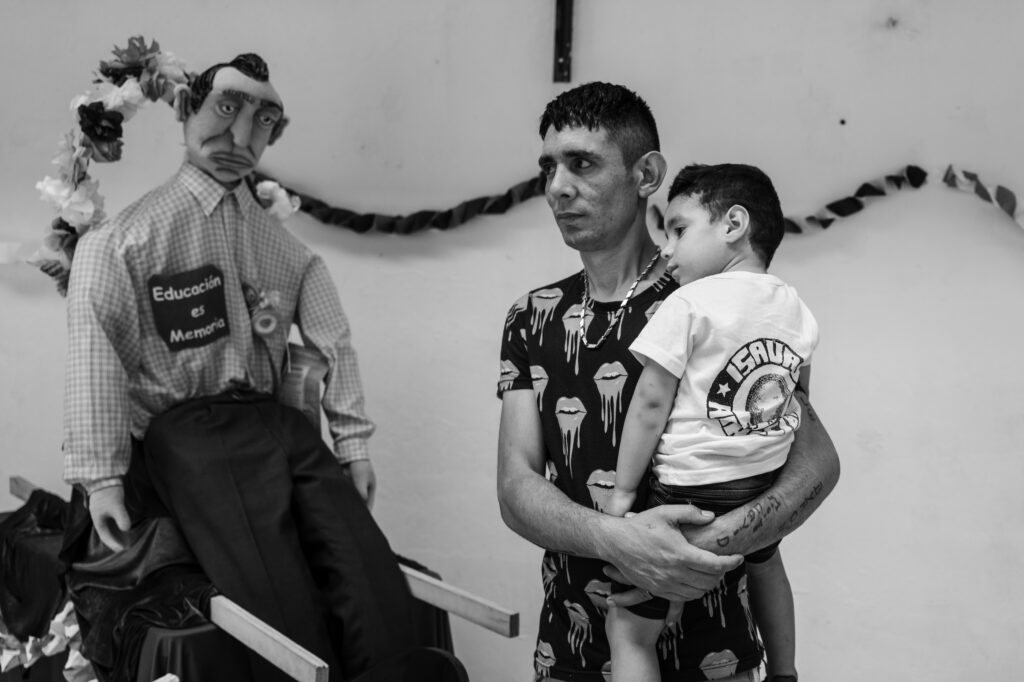
«Another dream is that we all have the right to access work. Many people say that there are jobs everywhere and that we don't want to work because we're lazy. But often, I've prepared a CV and sent it off to look for work, but I don't get called. Why don't they call me? Because of prejudice, about the way I dress, my tattoos, my scars, or the neighborhood I come from. So how can we say there's work out there if people live with these prejudices?»
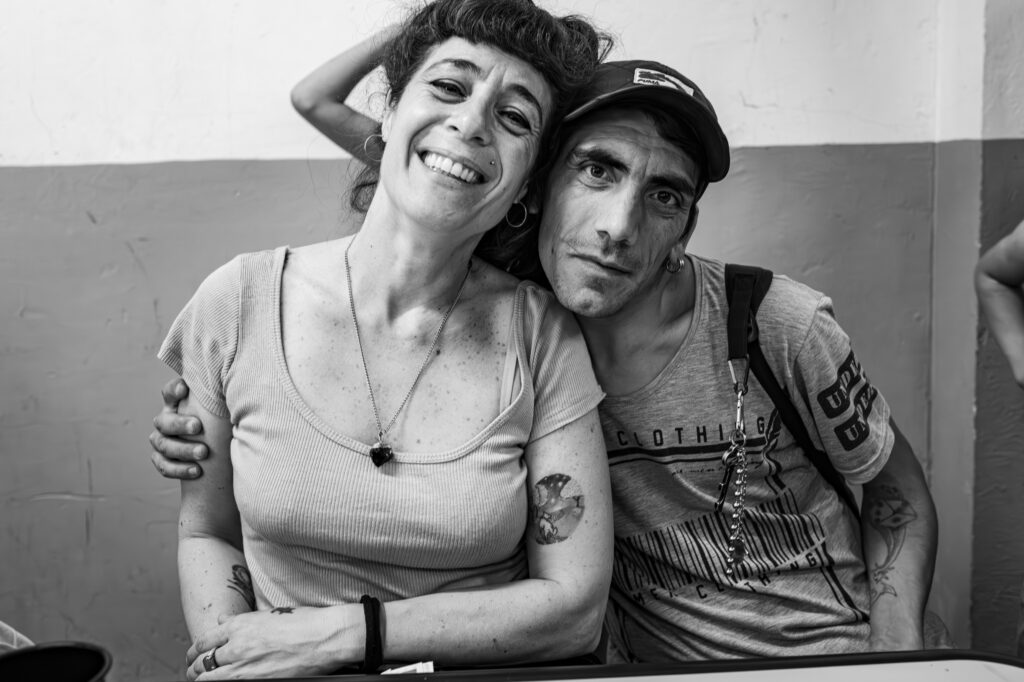
«I published a poem in the school magazine, El Chamuyo, which I dedicated to my son's mother. I think it was, “My tender Margarita.”
I'm not a great reader, I don't like it; I prefer to listen and look. And on what I see and hear, I write. That's how the words come.»
«But what I can read a thousand times is Martín Fierro. »
David recites verses from memory:
“Junta esperencia en la vida / Hasta pa dar y prestar / Quien la tiene que pasar / Entre sufrimiento y llanto, / Porque nada enseña tanto / Como el sufrir y el llorar”
Find me on Instagram: “versos.delcuervo” - David “El Cuervo” Bello
ALAN DALMASSO
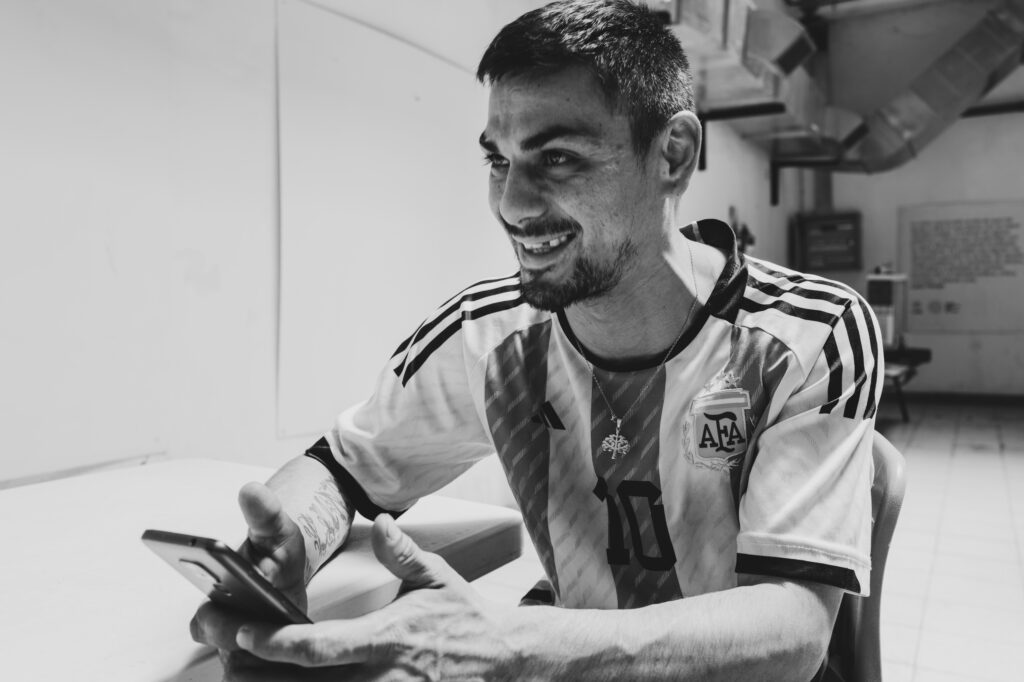
«I arrived at Isauro in 2015. I was 20 or 21 years old.
At first, I arrived as a street urchin. They always welcomed me with love. I was always very connected with Isauro. People hugged me a lot. Susana gave me a lot of love, as did the whole community.
I'm still in high school, in my first year. Right now, I've stopped because I've been concentrating a lot on work. Now, I'm learning to weld, do ironwork and make knives.
I want to reach my 40th birthday, God willing, and become a chef, a musician. Above all, I want to have love, to be able to give love with my heart, with who I am as a person.»
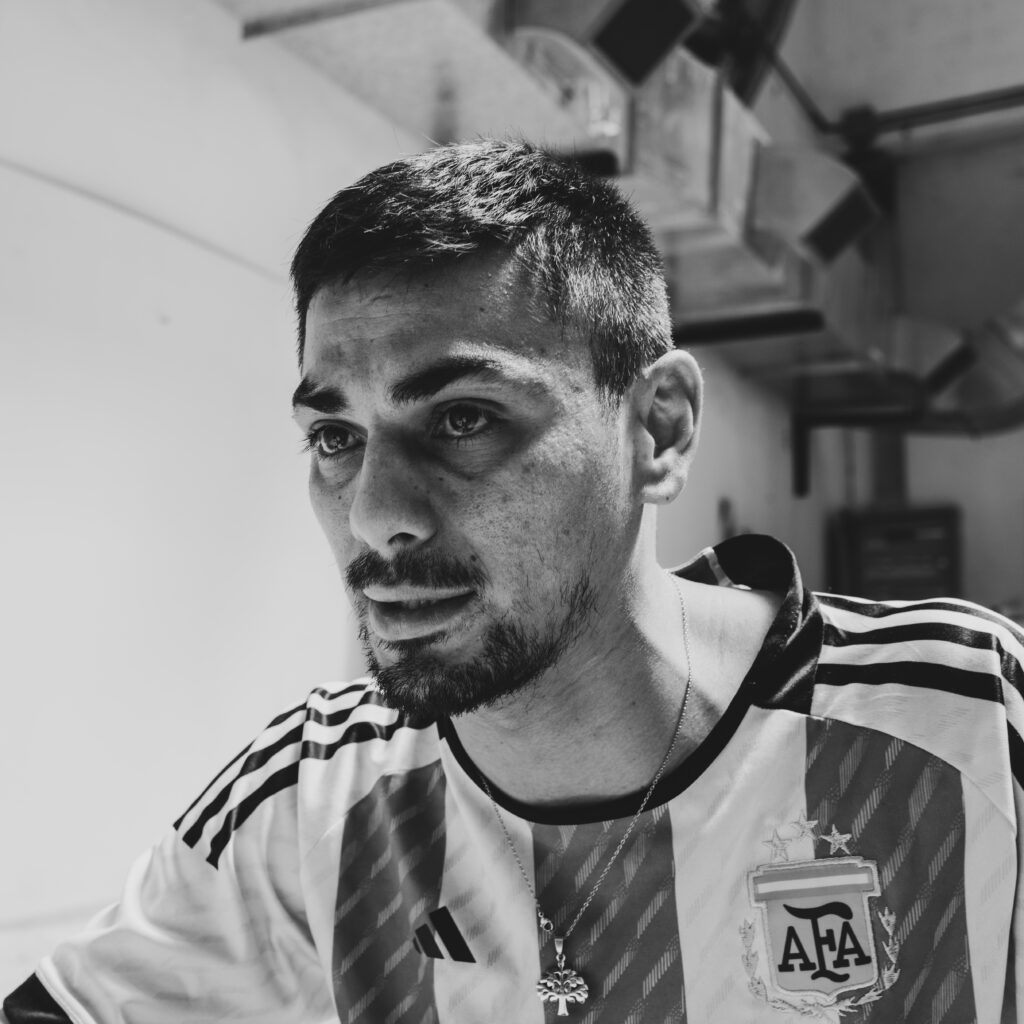
«If God has put all these beautiful people in my path so that I can move forward, so that I can become someone different, I'm going to do everything I can to show them, to God first, to myself, to my children, and to those who have believed in me, that I can become another person, that I can have a future, that I can create a life project.
Above all, I want to show Susana and the community that they didn't believe in me in vain. And that helps me enormously, because all that love they gave me, I can now pass on to others.»
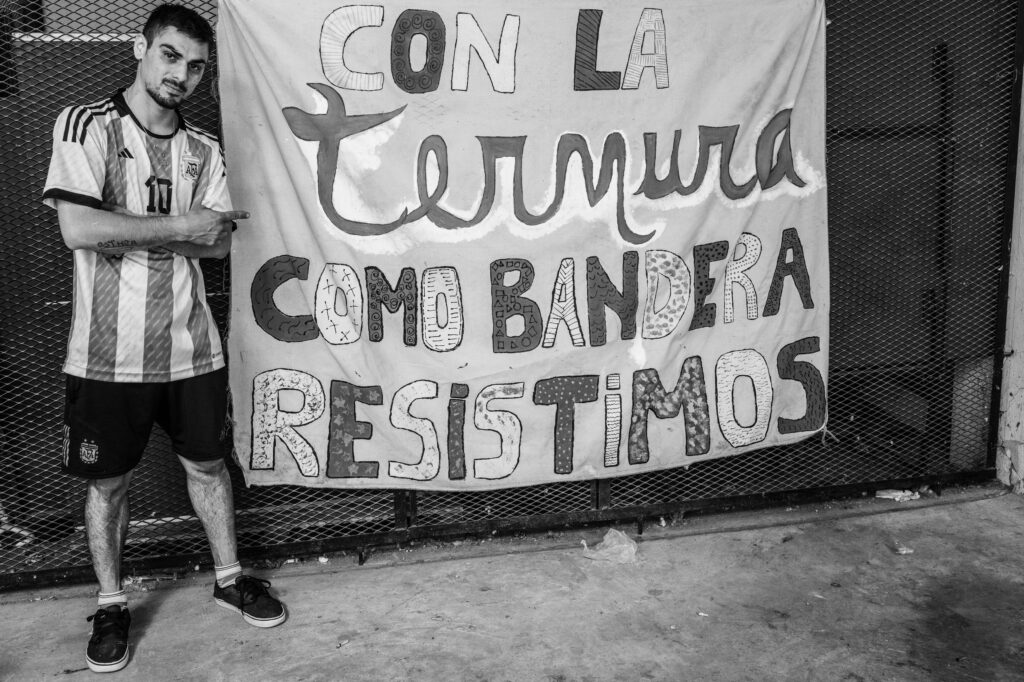
«I don't want to disappoint them, and I don't want to disappoint myself. I also know that I have many qualities, many faults, but I have so many beautiful things to offer. I have a beautiful heart that God has given me. Maybe I'm not perfect as a human being, flesh and blood, but my heart is worthy, my heart is good, my heart is sincere. That's why I always shed tears when talking about the people who help me, because on top of that, I'm sensitive... I'm Pisces.»
«I can be tough, because the street has made us this way. Poverty, constant fighting, confrontations with the police, abuse, institutions... it all makes us strong. But I don't want to be strong, I want to be a loving person, I want to give tenderness, I want to sing, I want to sing for God, I want to cook.»
VIDEO: ALAN SINGS
Watch the video on YouTube
« I've been singing since I was a child. God gave me this gift. And I write songs too.»
Jesús
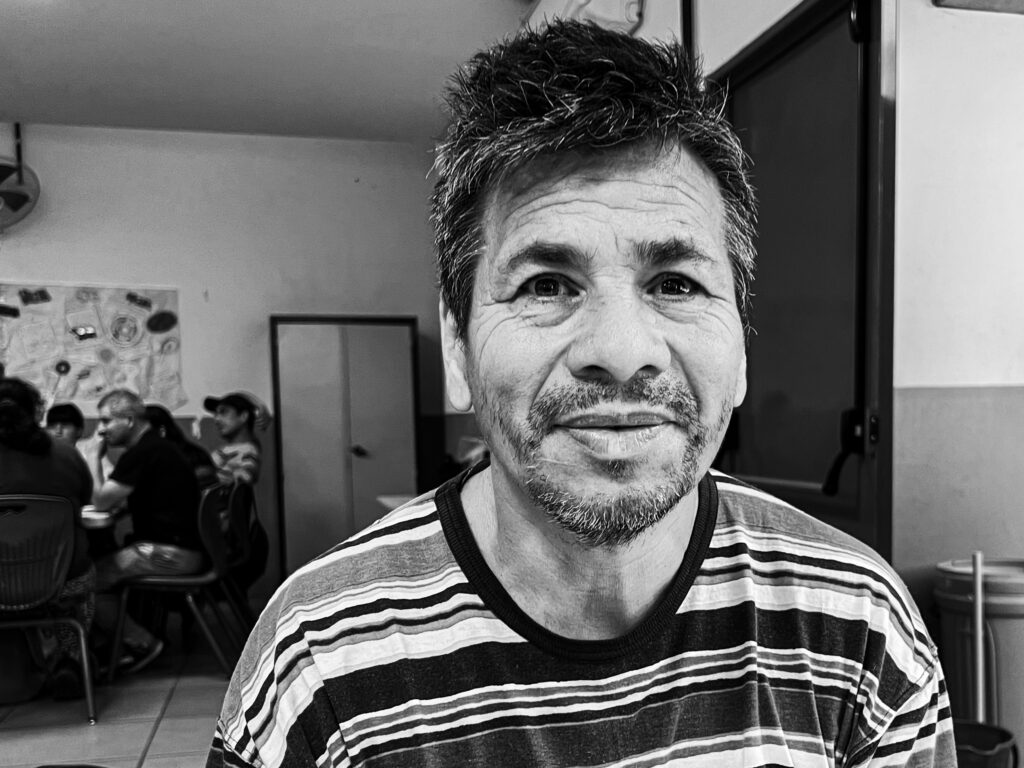
«I went blind because of diabetes.
This is my third year at school. This year, I've finished primary school and will be starting secondary school.
I don't see... but fortunately, I have some intelligence.»
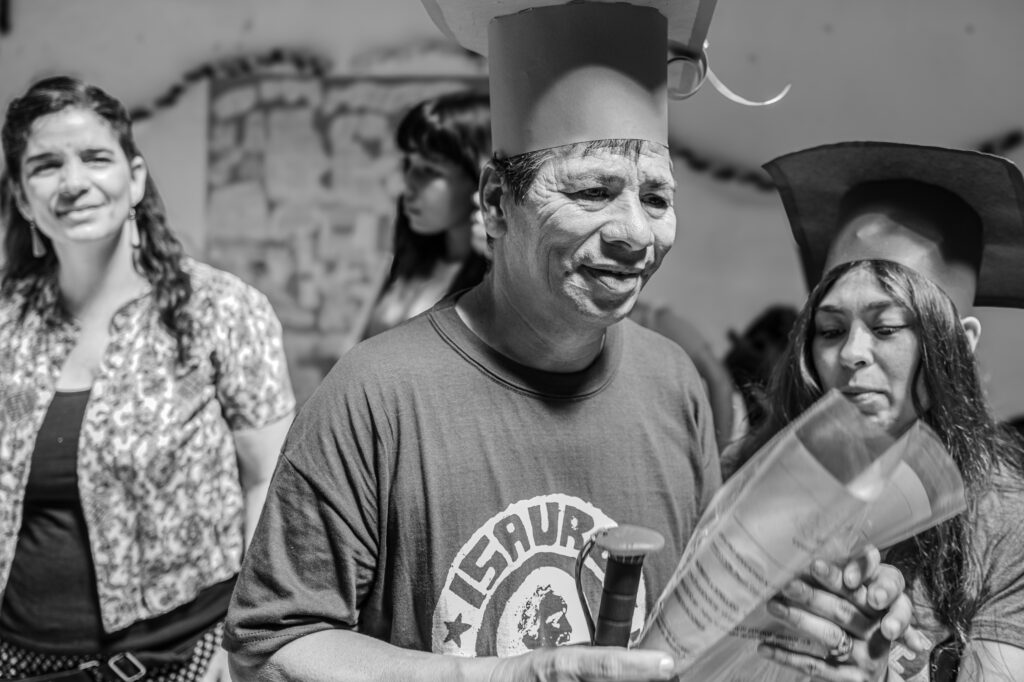
«I love art. Our wealth is humility. We must be humble of heart; that's our wealth. God teaches us to be humble. Rich people have money, but they're not happy. On the other hand, people who have no money carry humility in their hearts and are happy with very little. It's a wonderful thing. The rich have more and more, but they don't have the happiness we have. With a simple dish of food, we all gather here and we're happy, because we have something in our stomachs. When you die, you don't take your wealth with you in the coffin, but you do take your happiness with you. What we keep is what we carry in our souls.
Today, I woke up differently. With a greater desire to live, but that's up to God.»
«This is my son. His name is Santino and he's in first grade.»
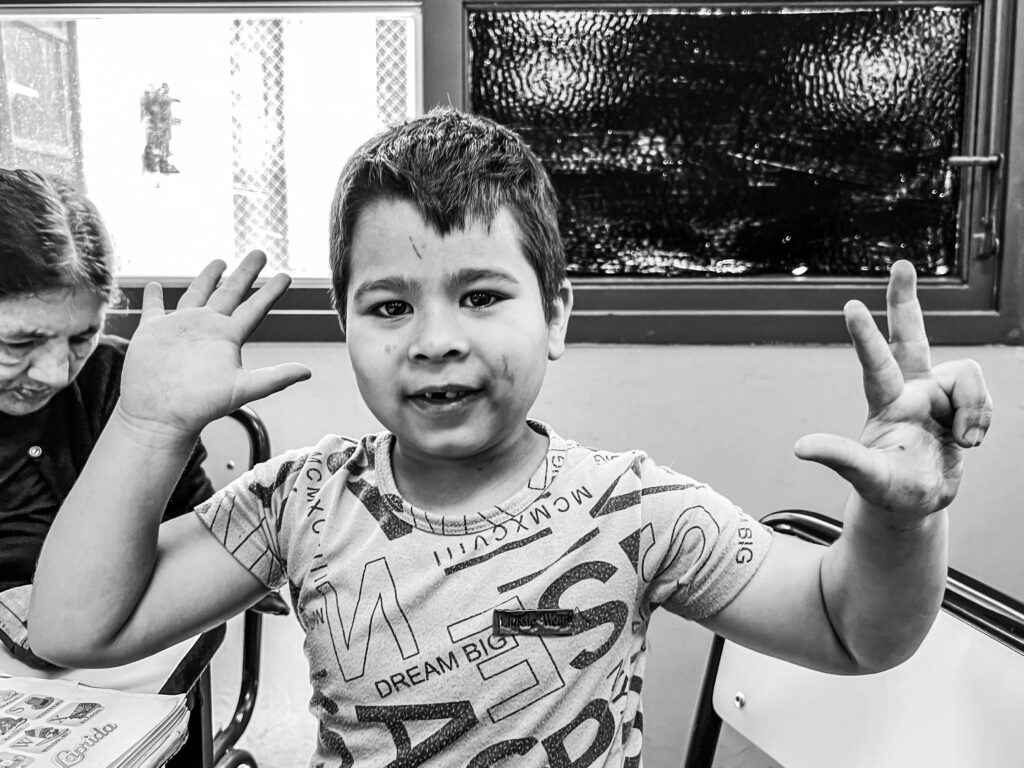
An anonymous testimonial tackles the subject of drugs, which is very present in the stories:
An anonymous testimonial
«Drugs come up a lot in interviews. To my question “How did you get off drugs?”, [anonymous name] replied:
“The truth is, I'm not going to lie to you: I couldn't get out of it at 100 %. I couldn't, I couldn't... I have relapses, because things in the world make you relapse, evil, bad people, memories, obstacles. Instead of seeking God, in truth, I go back to drugs.
It's a feeling of well-being, the drug, which only lasts an hour or two. But afterwards, when you come back to reality, it's worse, with the same sadness or the same memories... Because it doesn't erase anything, it doesn't take anything away: it just relieves you for a while.” »
Third stage: Teachers
All the teachers we met talk about what it's like to teach young and adult students in vulnerable situations.
The testimony of Pablo Dalmastro, who runs the bike repair workshop, sums up what many teachers have told me.
«Being a teacher at Isauro is an activist experience. It's often frustrating. These are projects where not everything depends on you. We're constantly surrounded by an environment and context that are almost always unfavorable.
What's more, the particular realities of each student attending the school mean that the workshop is often perceived as something secondary, rather than the priority we'd like it to be. The energy we bring to the table, thinking we're changing the world, often comes up against reality.
So, here, the aim is to militate for equal opportunities. It's a daily struggle. We take three steps forward, two steps back; we take one step forward, four steps back. Some periods are better than others.
We have experienced many losses: people die in the street, others lose their freedom in different circumstances. We are constantly confronted with these situations.
In militant work, you always give more than you receive. Because if you receive more than you give, then you're doing something else: assistance, charity, or acting with an almost selfish motivation.»
*Here, the problems faced by any human being are compounded by marginality. Some generations are already born with structural inequality, because they are born without a roof over their heads. From then on, we build on nothing, and destroy on nothing, all the time.
Isauro's concept is aimed at people who are excluded from the system, and sometimes not just once, but for the third time.
It's very difficult, even for teachers, to realize this. It has to do with class prejudices, the prejudices we all carry.
Being a teacher at Isauro is very rewarding, but it's also extremely demanding and very engaging.»
Tito Cestona
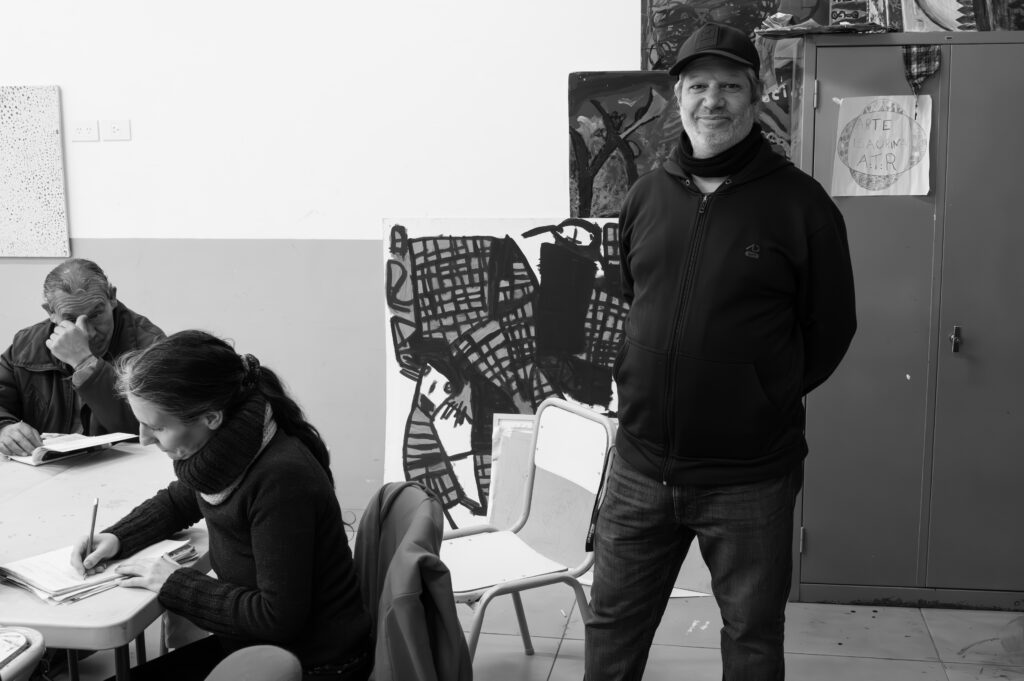
«I'm a teacher in the mornings, and in the afternoons I work as a car oil and filter salesman. In addition, I'm an artist and writer.»
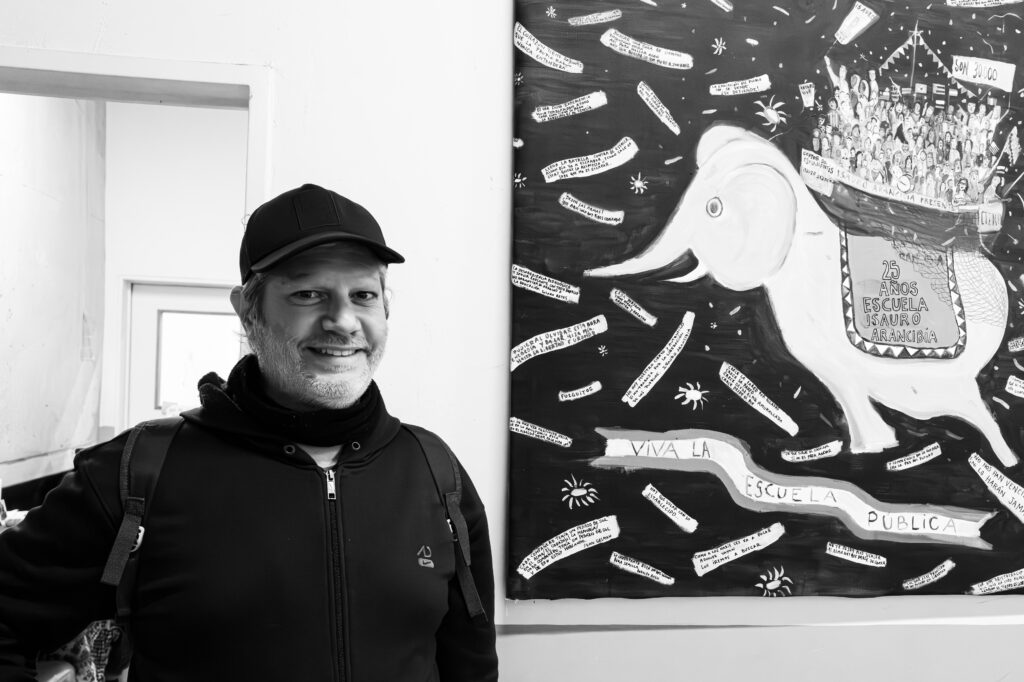
«I've been working at Isauro since 2019. It's a new, clearly different experience.
The students come from the street: sometimes they're not there all the time, which complicates things. For example, today we read a story, and tomorrow we want to repeat it, but two or three pupils who weren't there yesterday will arrive. So we try to make sure that classes start and finish on the same day.»
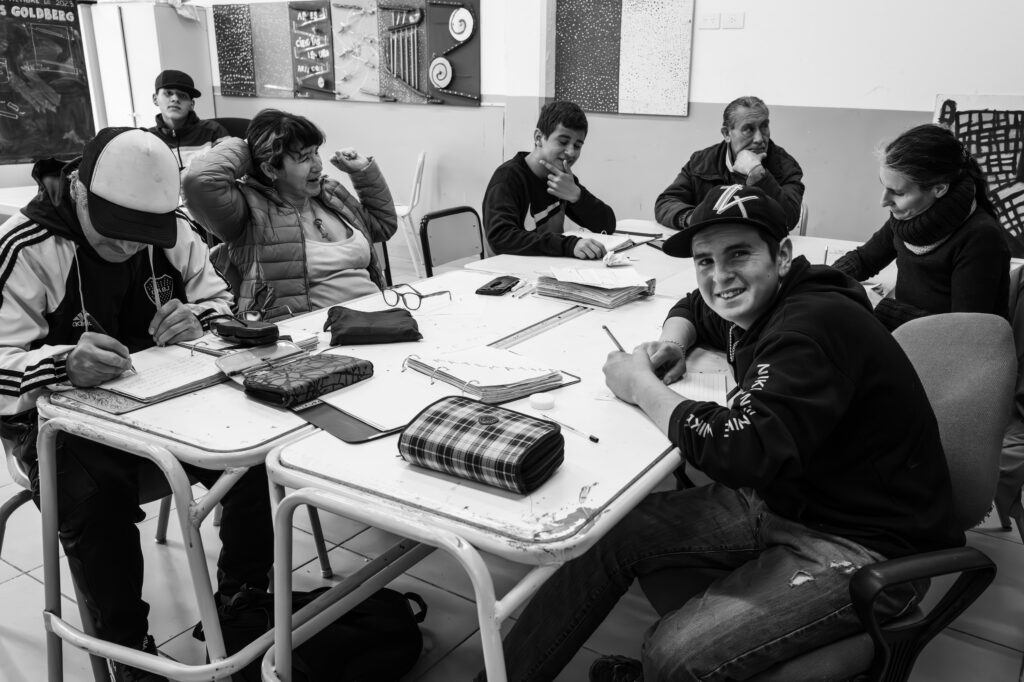
«People here have different backgrounds, different interests. The school offers something different from a traditional elementary school where everything revolves around math and language.
Here, there are people with major learning difficulties. For example, some people can't pass what would be a first level and have been coming for five years. We don't always know whether it's a problem of disability, a social problem or their background, which makes learning difficult.»
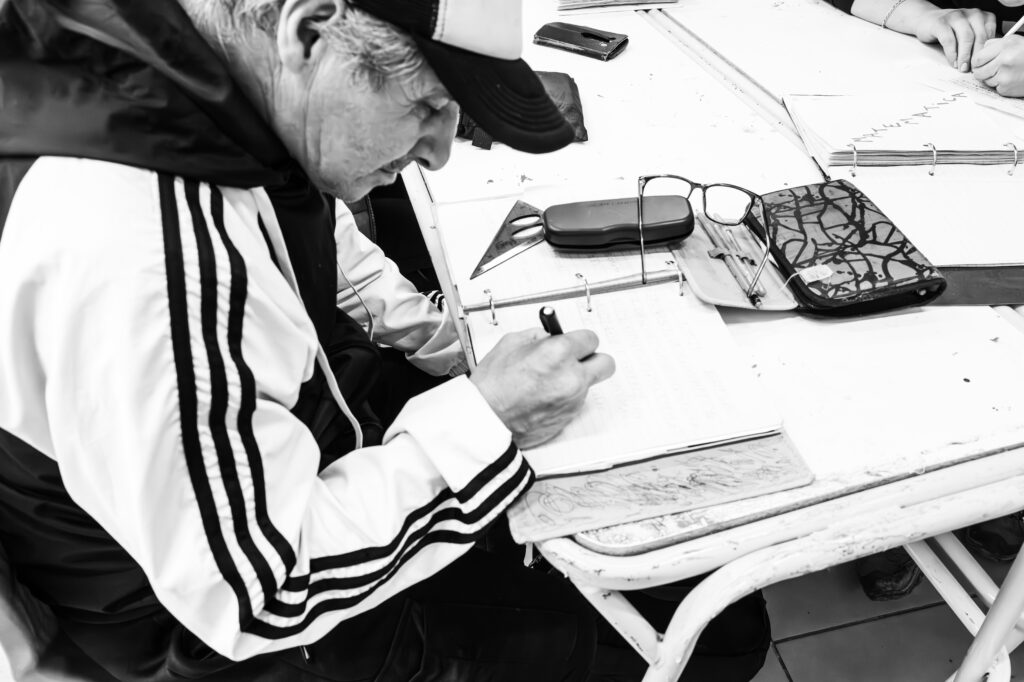
«As a teacher, you have to unlearn and relearn. We have comprehensive sexuality education (CSE) classes every week.
At first, I thought the social sciences were more important. But now I see that sexual health care and prevention are crucial, far more important than learning the geography of America or Europe.
Here, we work with these realities. For example, María Brizuela and Yoli have found their form of expression through art.»
«The truth is, it's these wonderful things that you discover over time at this school. It's a great satisfaction to see the evolution of certain students.
It's a privilege to be here, even if sometimes you have days when nothing goes right and you just wish the day would end.»
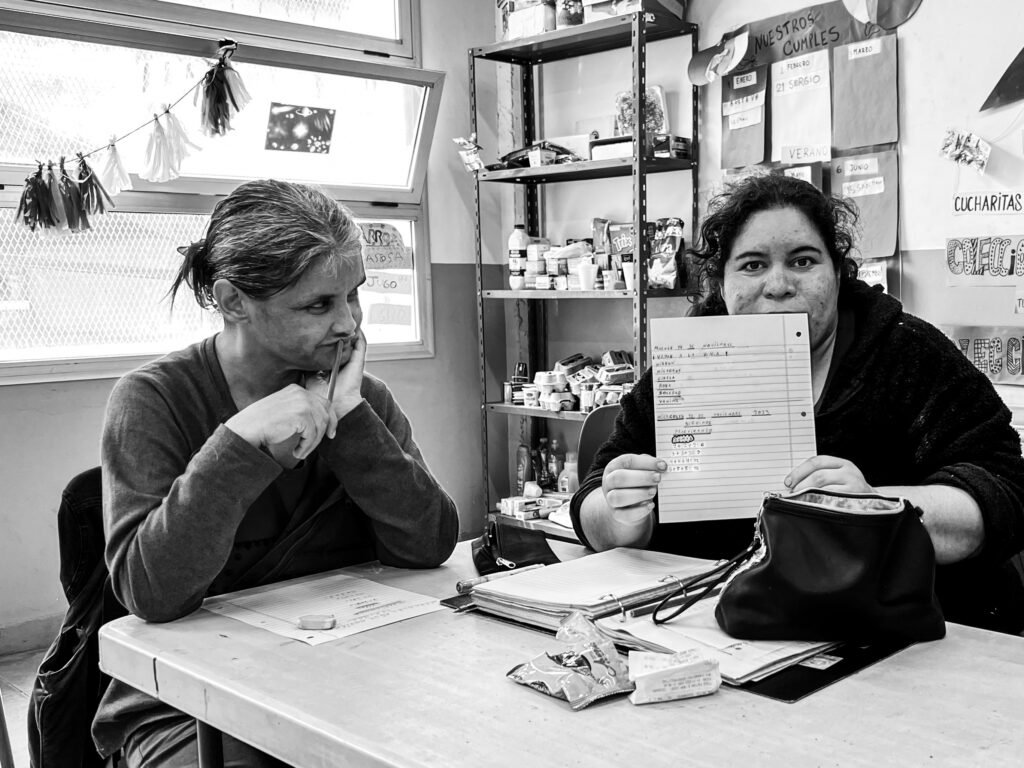
VIDEO
Tito tells a tale
Watch the video on YouTube
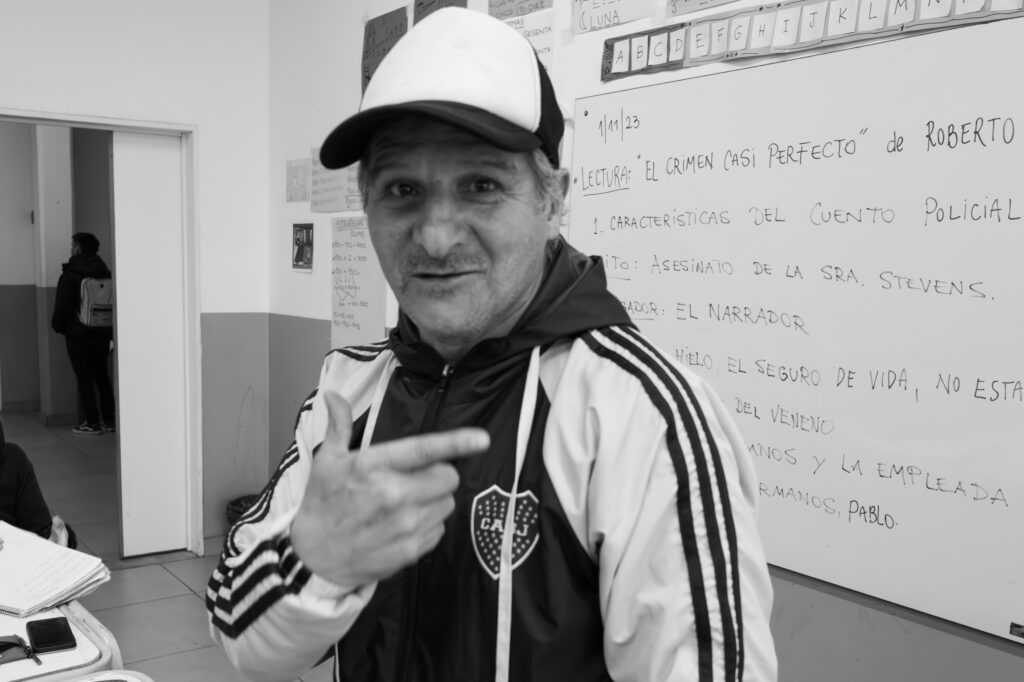
Florencia and Macarena (teachers)
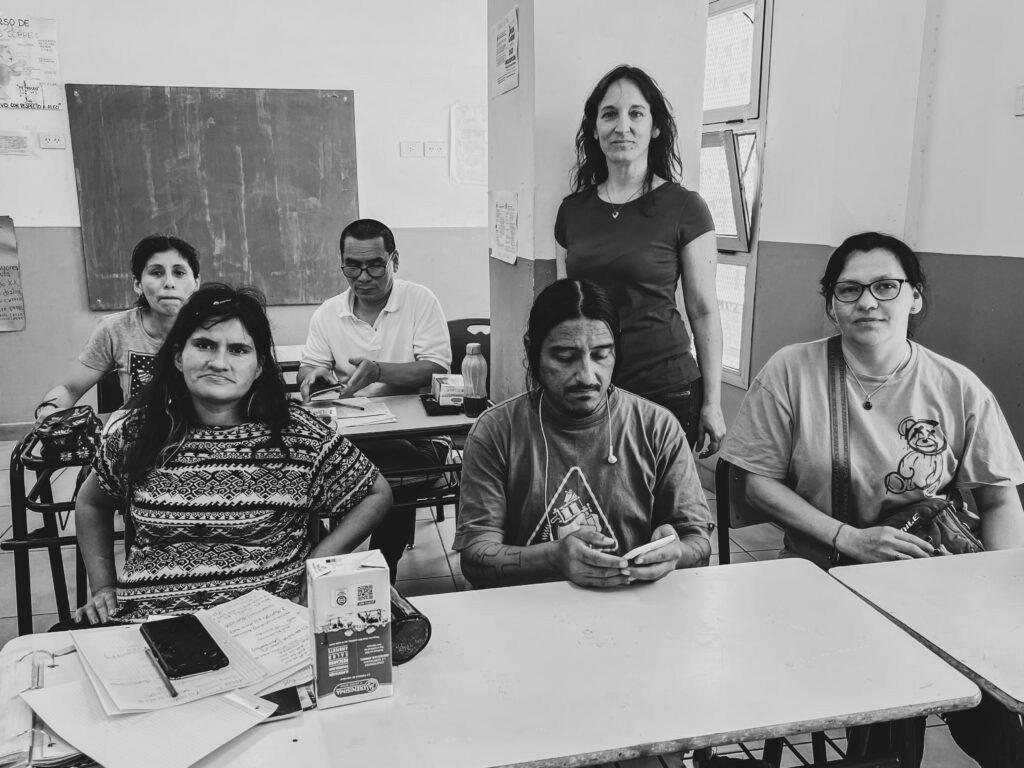
«I'm an elementary school teacher. This year, I work in the morning with the first cycle, called the literacy cycle, with Macarena. In the afternoon, I work with Sergio and Sol.
The literacy cycle focuses on the first steps in the reading and writing process. Cycles are not strictly annual or semi-annual. A student can spend two or three years in the literacy cycle until he or she completes the process. It's very, very flexible, and that's what's great about it.
For example, on Tuesdays we set up a small reading and writing workshop. We bring in two students from the second cycle who need to work on these skills. They come first to take part in this workshop, then return to the second cycle.»
Macarena adds another aspect to this flexibility:
«Some students return after a break of 4 or 5 months. The first thing they do is look for their file: a symbol of pride. They remember their teachers. Naturally, we welcome them with open arms, which would be impossible in other establishments.»
Stage 4: Activities
Here's an overview of some of the activities I've attended at this multi-faceted school.
The “La cuerda flotando” orchestra”
Alejandra Soto explains that the orchestra is a project funded by the Isauro Civic Association.
«We've hired teachers to give violin, cello and double bass lessons on Mondays and Wednesdays.
We're not doing this workshop to create a string orchestra per se, but so that the children can learn another language: the language of music. If they learn and an orchestra is born, so much the better; but the essential thing is to offer them another cultural capital and show them that they can access the world of music.
Non-literate children are learning to write musical notes. They've even composed a song together. When I see them play, it's truly a marvel.»
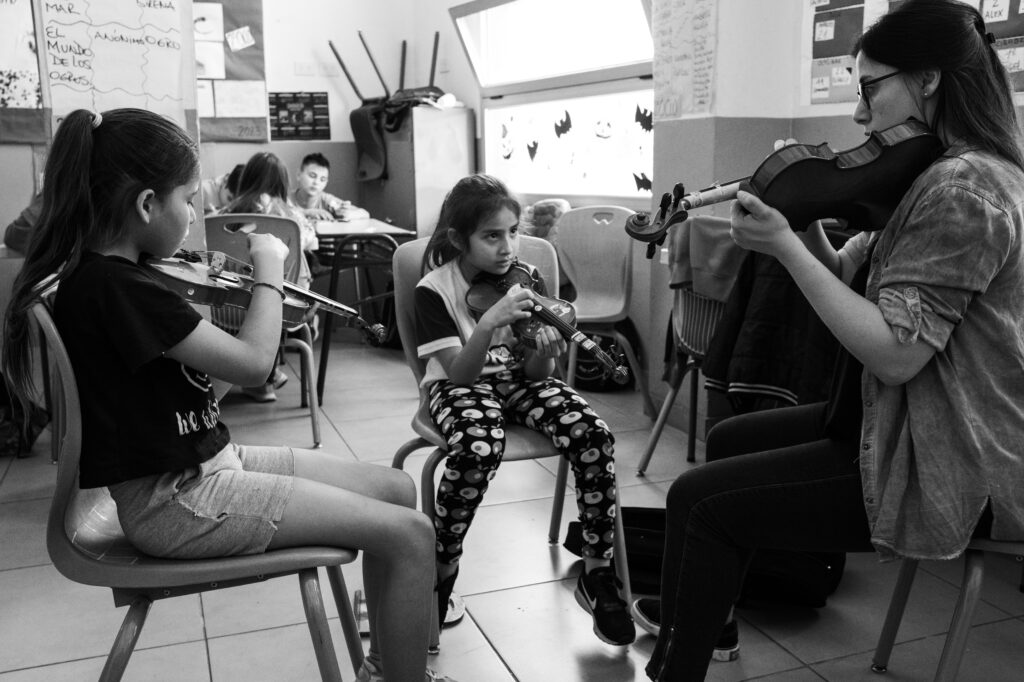
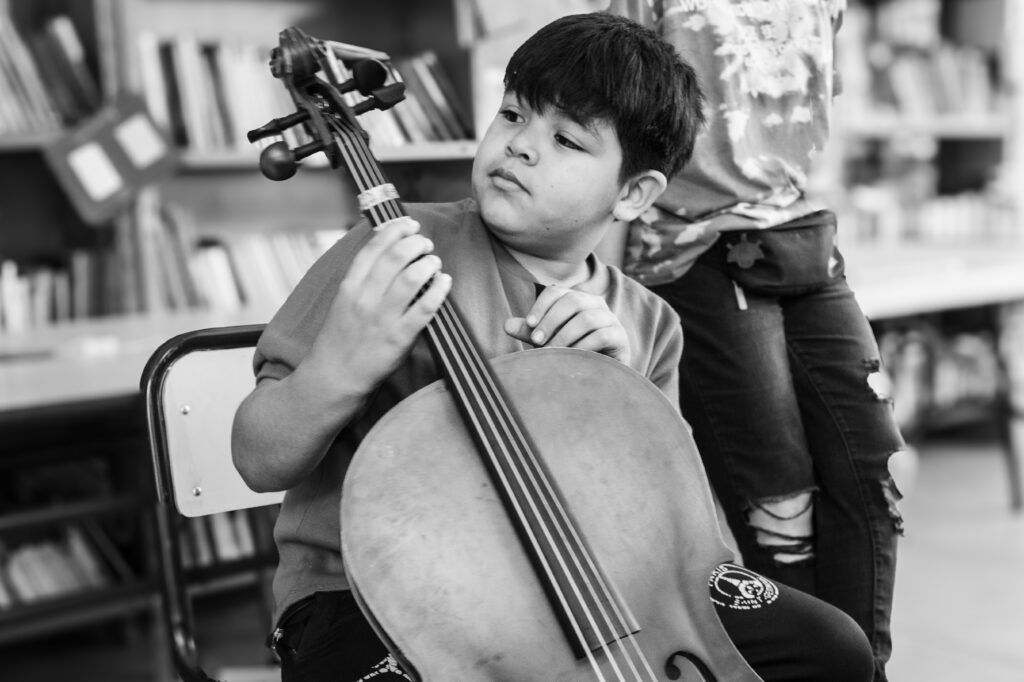
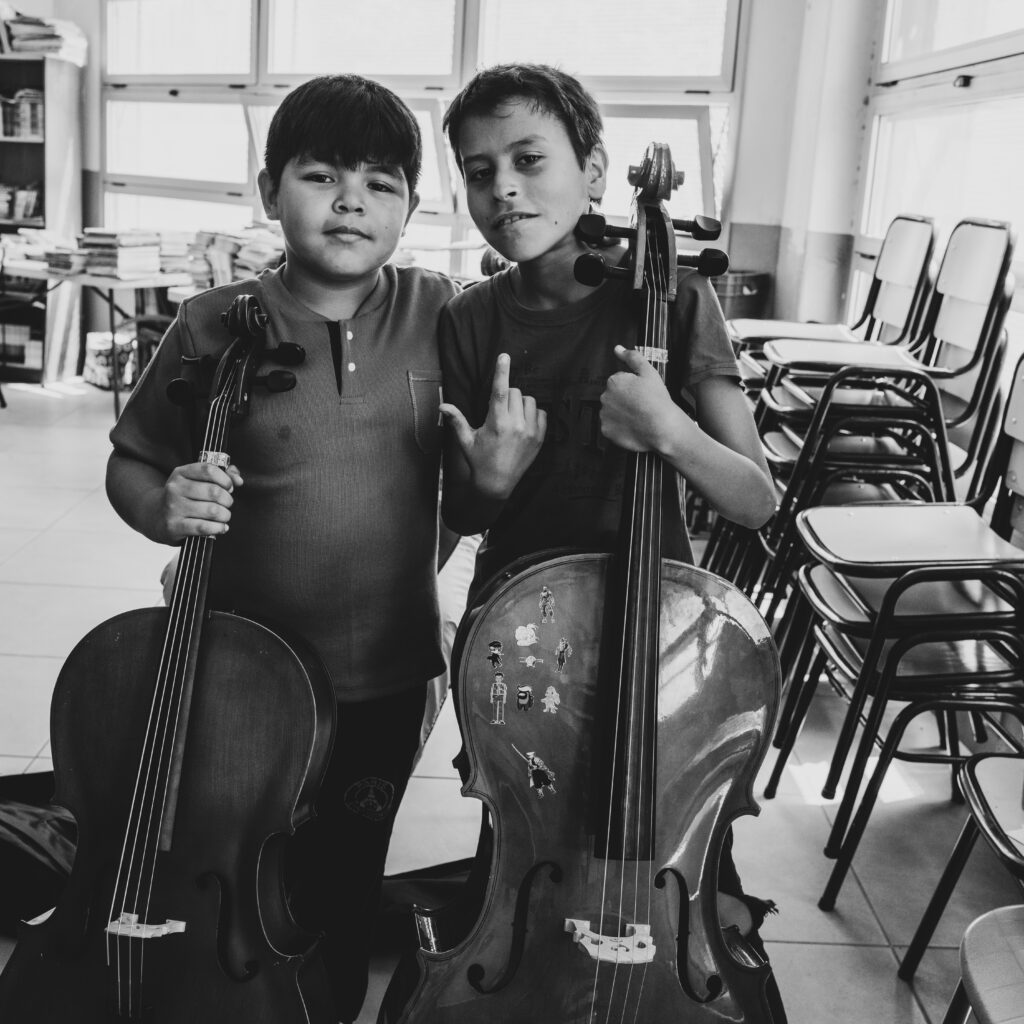
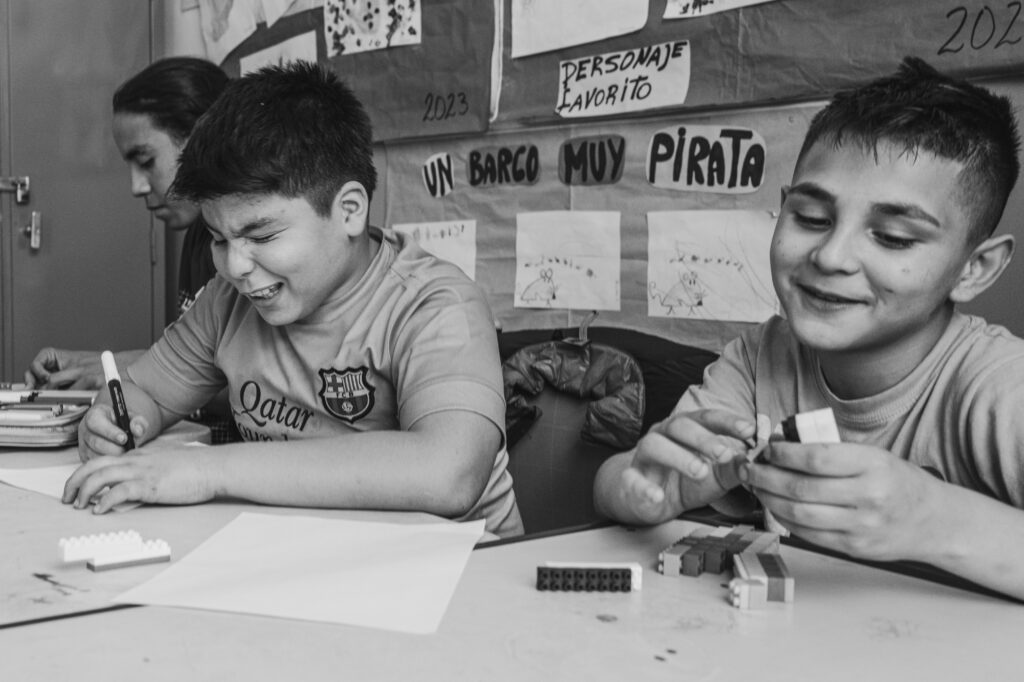
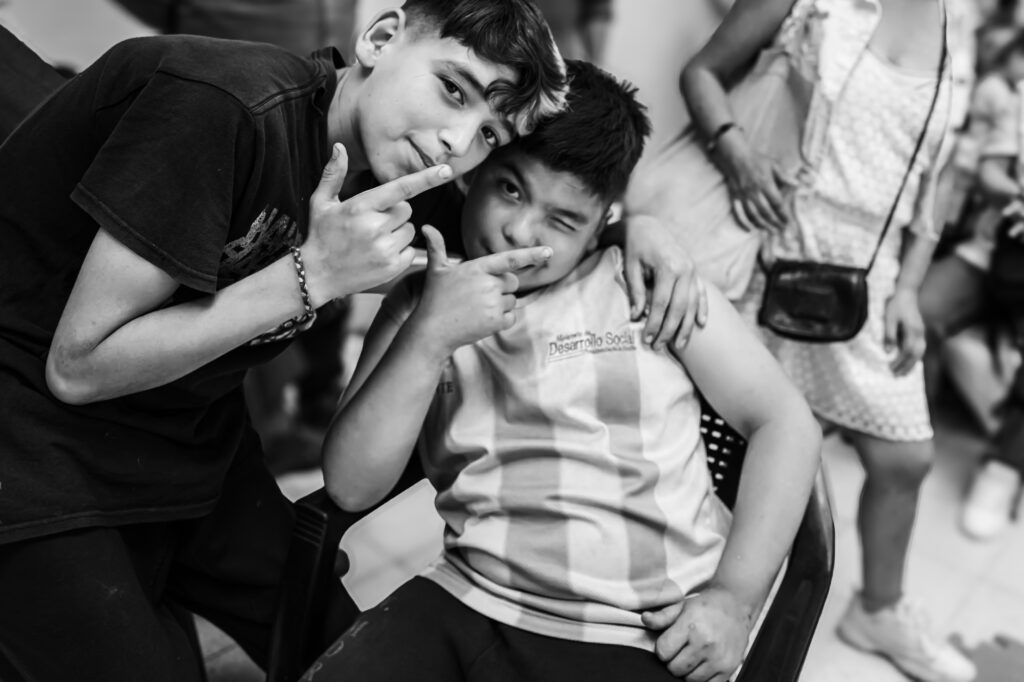
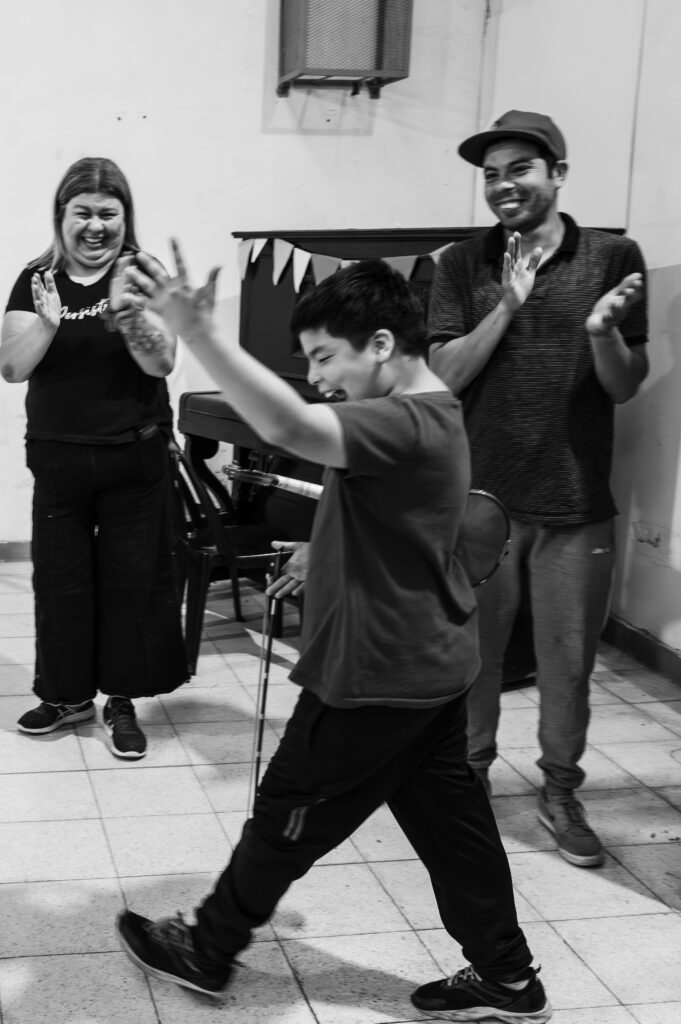
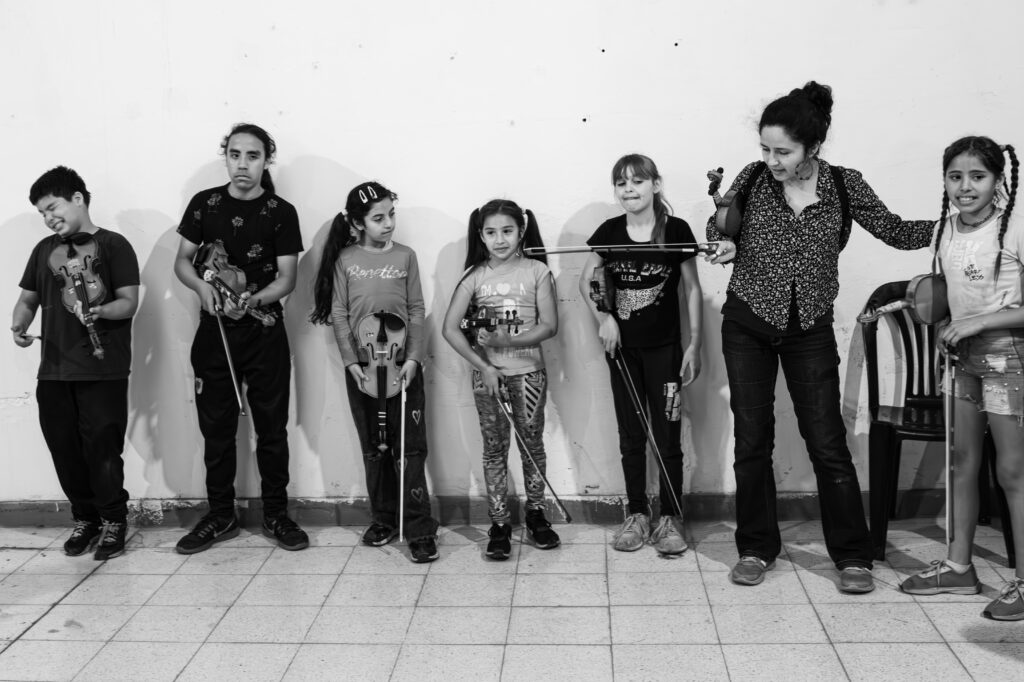
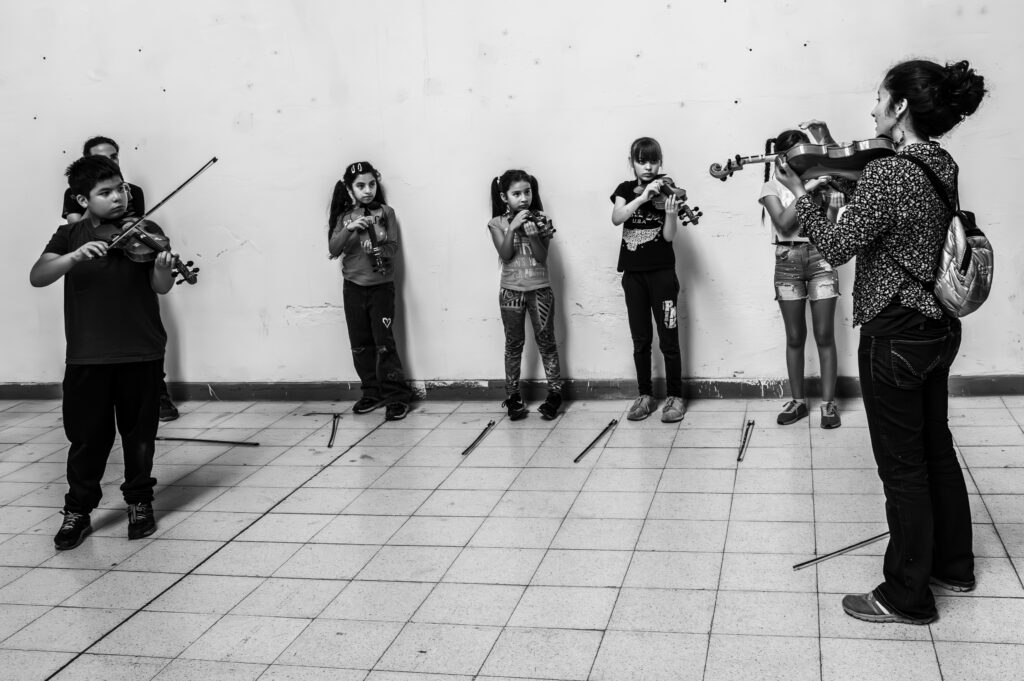
VIDEO: The orchestra
Watch the orchestra video
Or the whole band: Watch the band
ISE (Integral Sexuality Education)
VIDEO: Nati, responsible for‘‘Integral Sexual Education
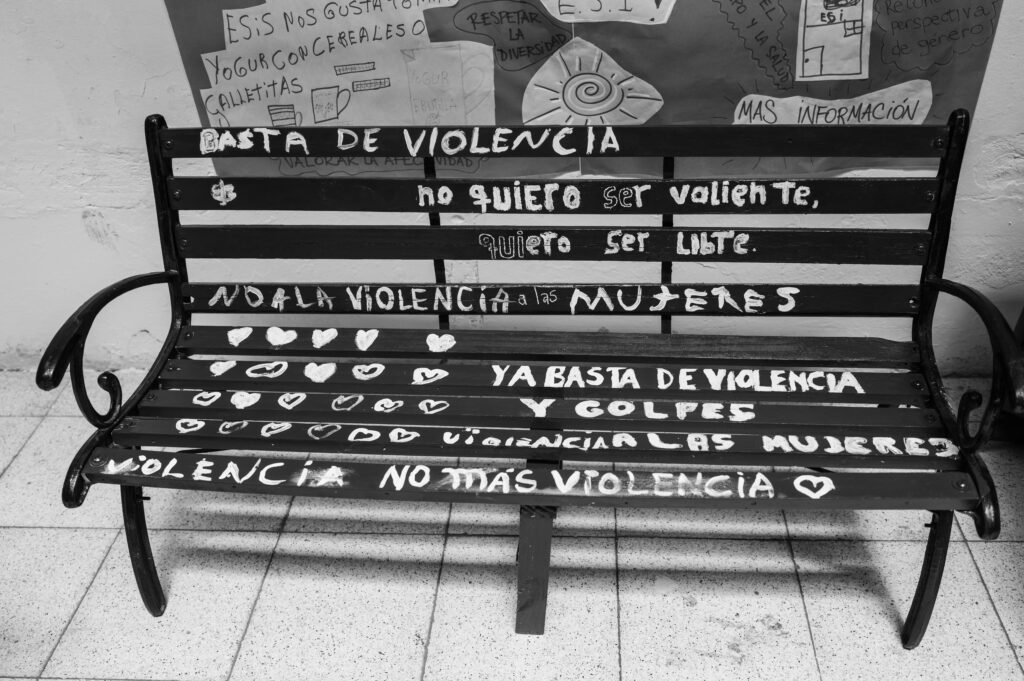
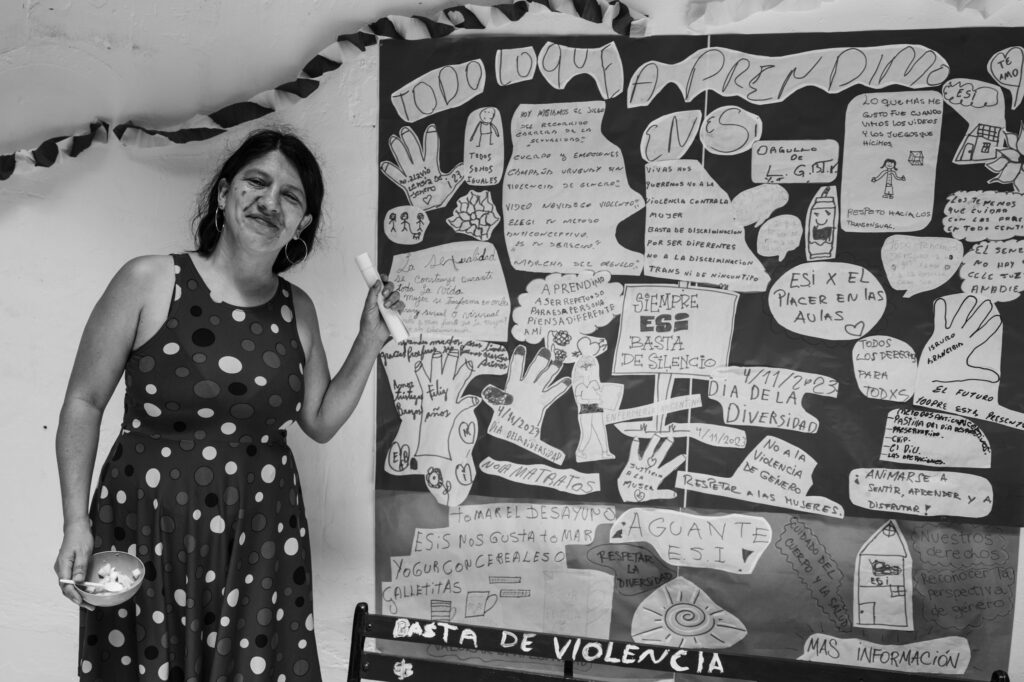
Theater workshop
One morning, a boy came looking for me in a hallway and said, «Come, I'll take you to the room where the theater workshop is held.» How did he know I might be interested? A mystery. Thanks to him, I was able to attend a rehearsal and the following week, the final performance of a play entitled “The Disturbing Neighbors”, conceived entirely by the students. It was a moving experience.
Ivana and Silvana
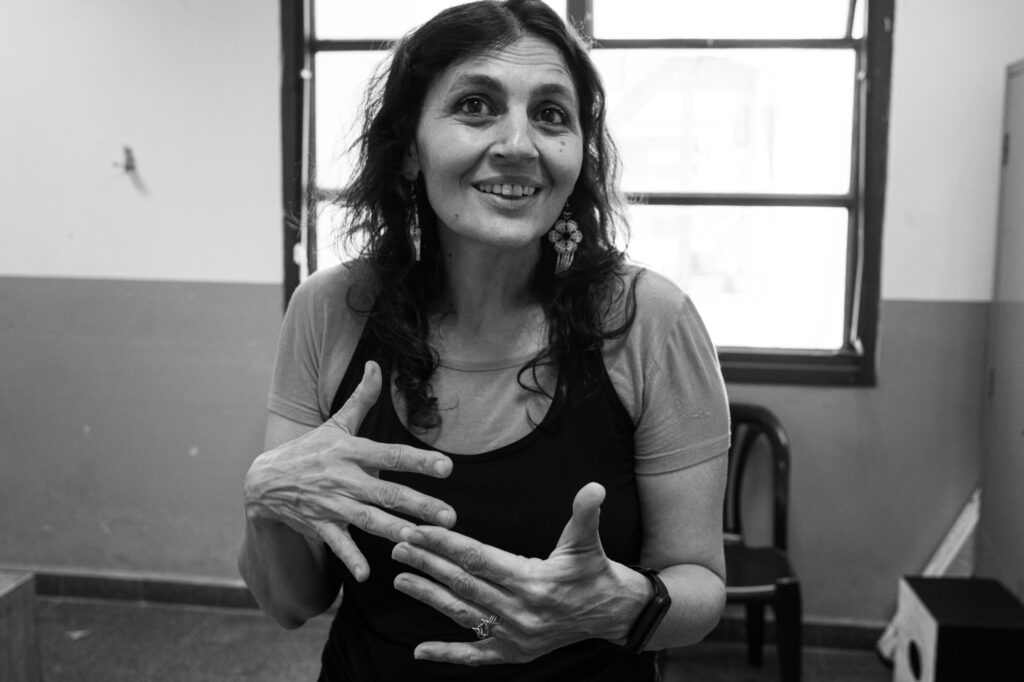
«I'm Silvana, a music teacher, and I'm Ivana, a drama teacher. We run a workshop called “Theatre-Music”, where we've been combining the two artistic disciplines for 12 years.
We work with the second and third cycles, as well as with the project-based training group, as part of the “theater-music” project.
We're preparing this piece of musical theater entitled ‘Les voisins dérangeants’. This time, we're working with a script, dialogue and text. We've also added a little song, which is also a student creation. We had to delete some scenes, because there were too many characters, too many ideas, so we cut back. Everyone wanted to take part! It was difficult to sort them out, because some students were disappointed.»
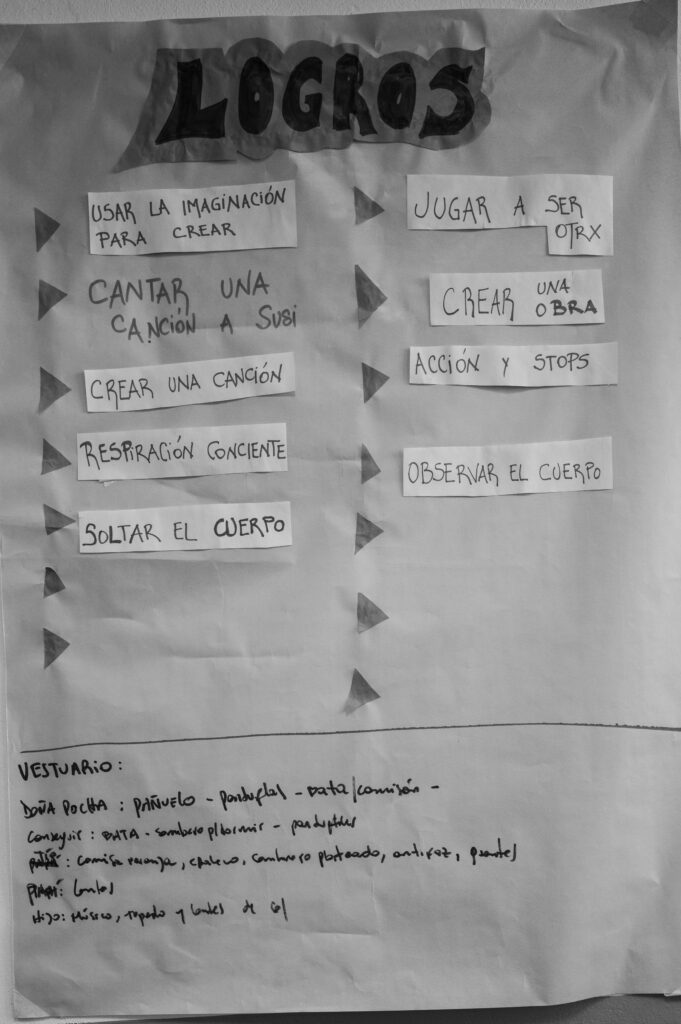
«Many of our students have never been to the theater before... it gives me goosebumps. We show videos to give context.
Some days they're online, others they're not. This happens a lot: you have to work with immediacy. Sometimes they don't show up. Today, for example, the “saleswoman” didn't show up. So we have to rethink the project in the light of this discontinuity.»
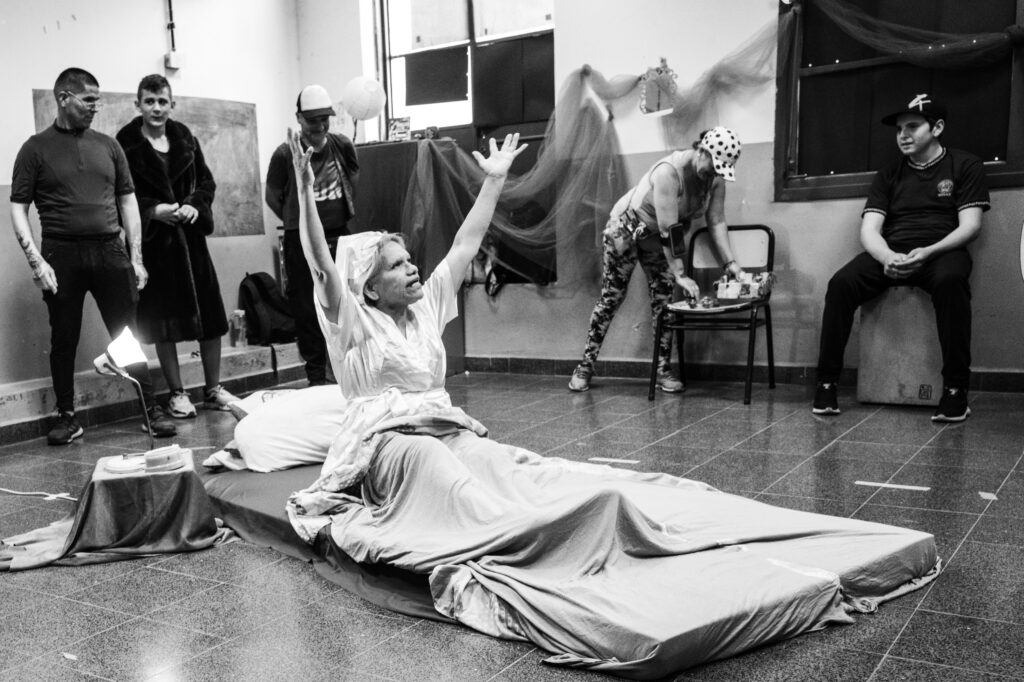
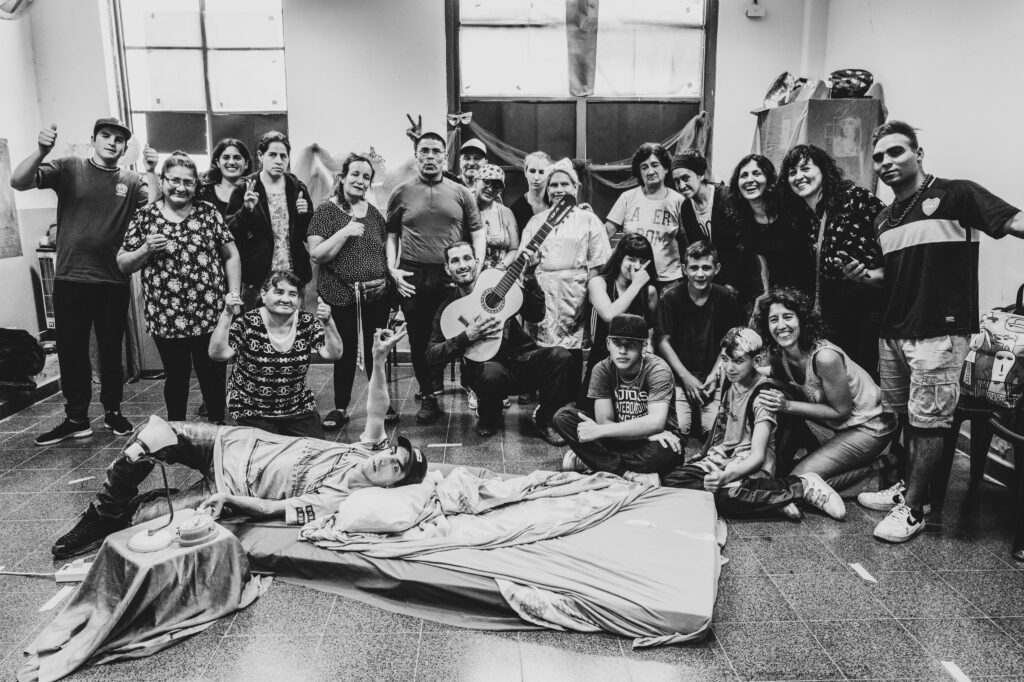
VIDEO: The performance
Watch the play on YouTube
The bike workshop
«I've been here for six years," says Pablo, who is in charge of job training and the bike workshop. I started coming as a volunteer. Now I only come one day a week.
In this workshop, we develop “training for work”. With students who have a predisposition and good aptitude for mechanics, we try to form a work group, from organizing the workspace and tool panels, to implementing a bike repair project. The student leaves with the experience of working in a team and carrying out a project.
We're also trying to promote the use of bicycles as a means of transport, not just a leisure activity. The idea is to bring these two worlds together: the world of the street and the world of the bicycle.
For example, the bicycle for a street sale was a request from a student selling juice and coffee.»
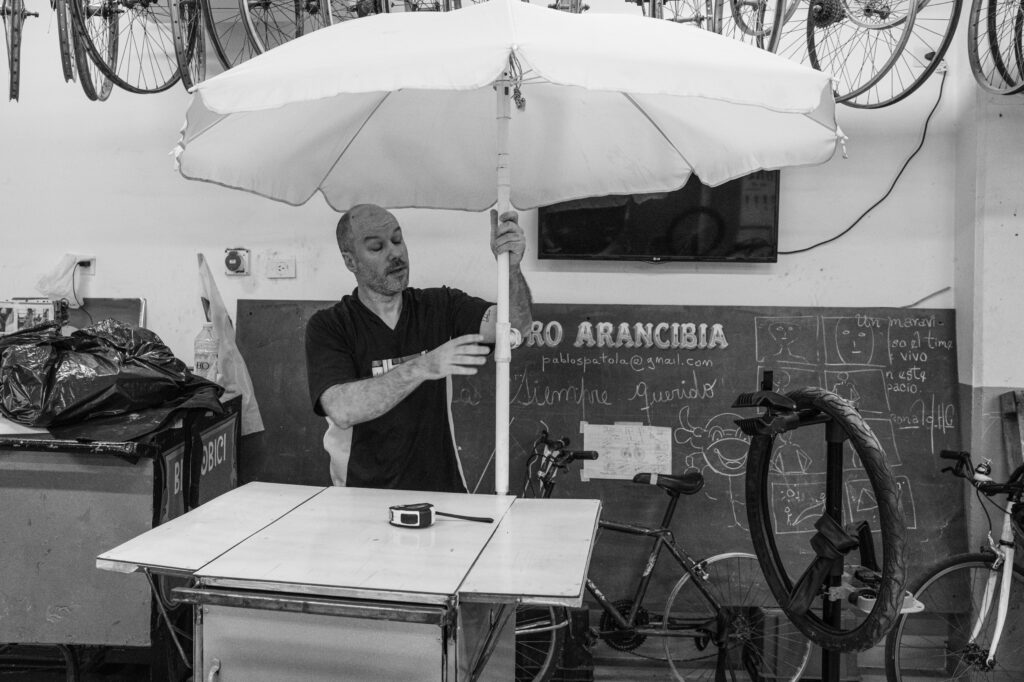
«She needed a means of transporting juices and thermos flasks for hot drinks.
Students from the fileteado (decorative painting) workshop take care of all the aesthetics.
This prototype was the first, and it opened up a whole new range of possibilities.»
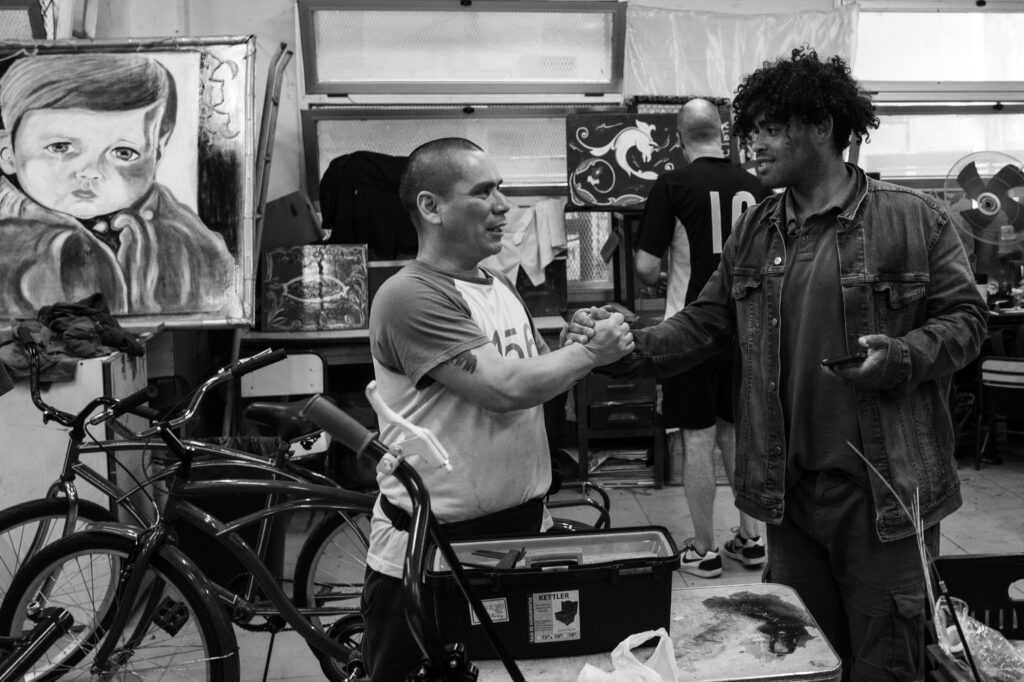
The magazine - El Chamuyo
A student workshop prepares an annual magazine entitled “La realidad sin chamuyo” (Reality without lies).
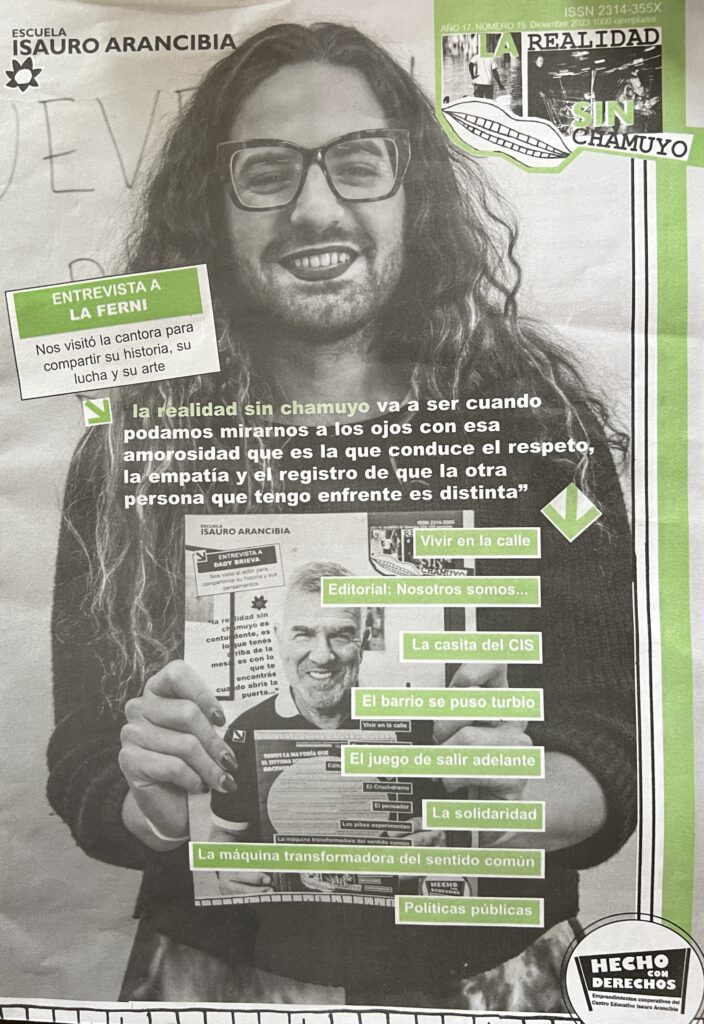
VIDEO: Magazine presentation
Watch the presentation on YouTube
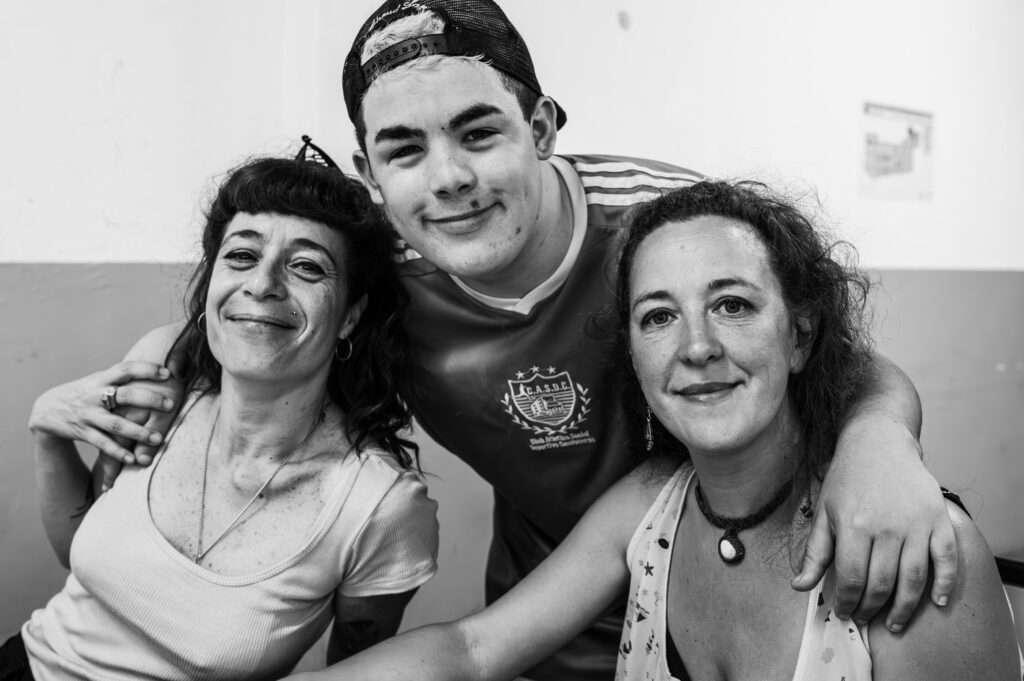
CAI (Children's Activity Center)
Every Saturday morning, a wide range of recreational and artistic activities are offered to children, including those who are not Isauro students. These include a murga (festive urban dance) workshop, children's storytelling, sports and other workshops.
The end-of-year party
Like all major events in Argentina, this column ends with a party.
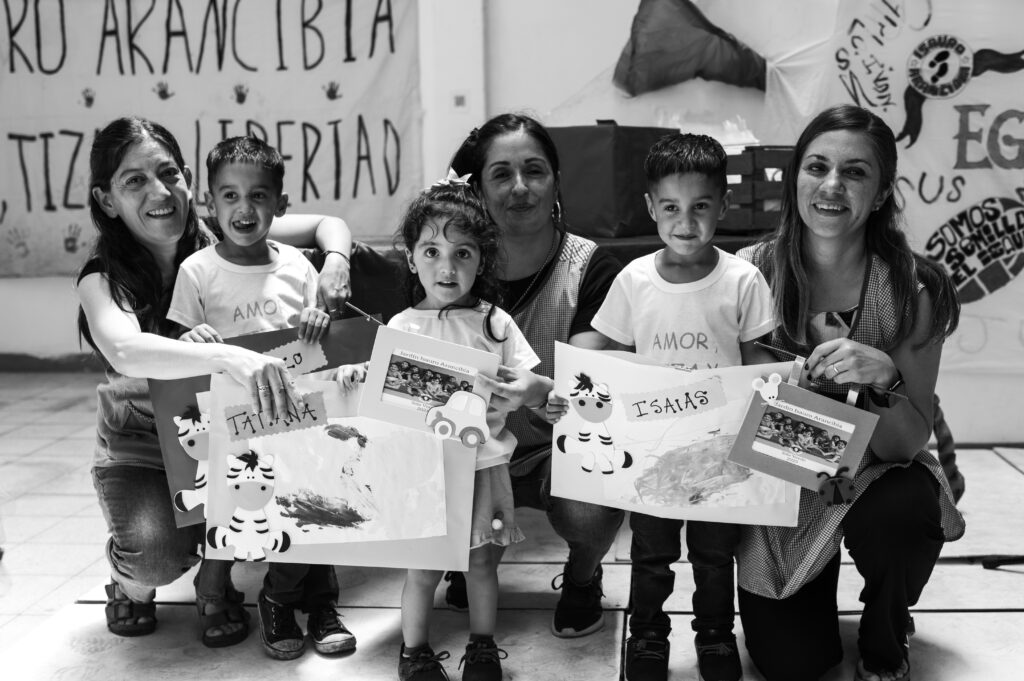
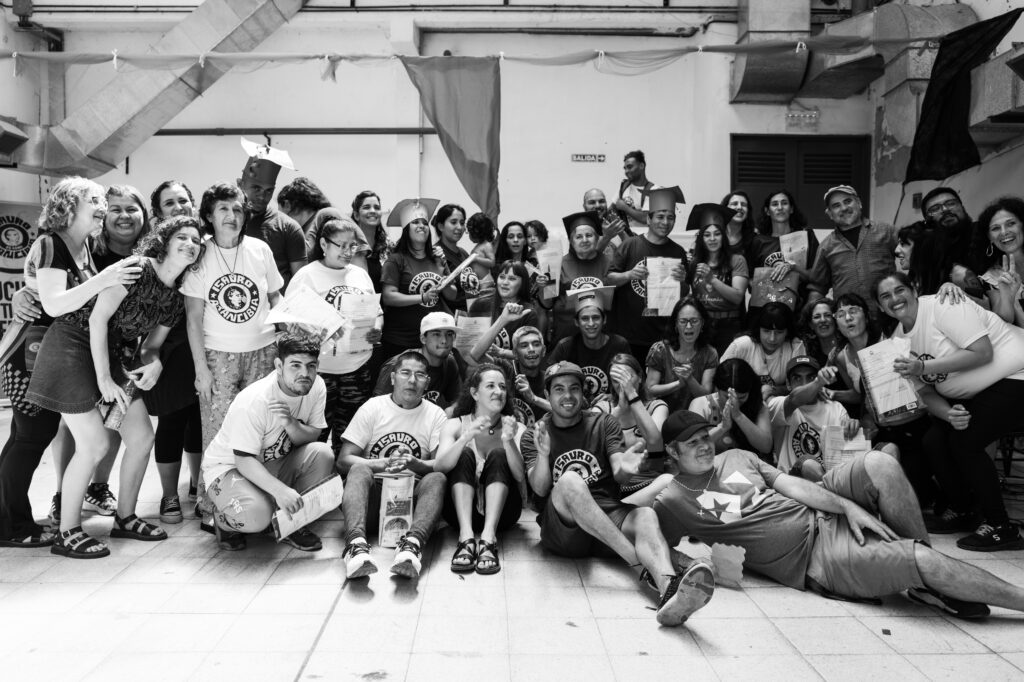
VIDEO: Graduation speech
Watch on YouTube
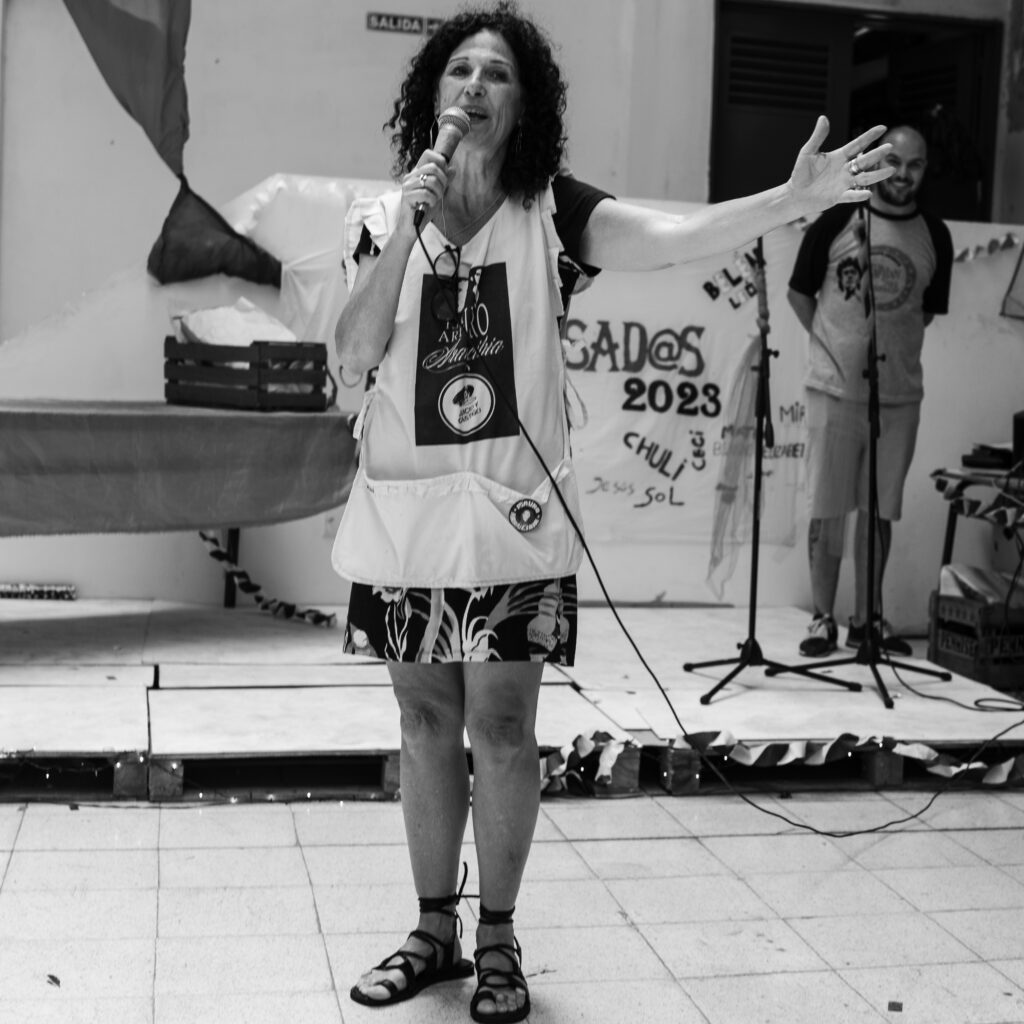
Watch the video
The ball
And everyone dances!
Watch the video of the ball
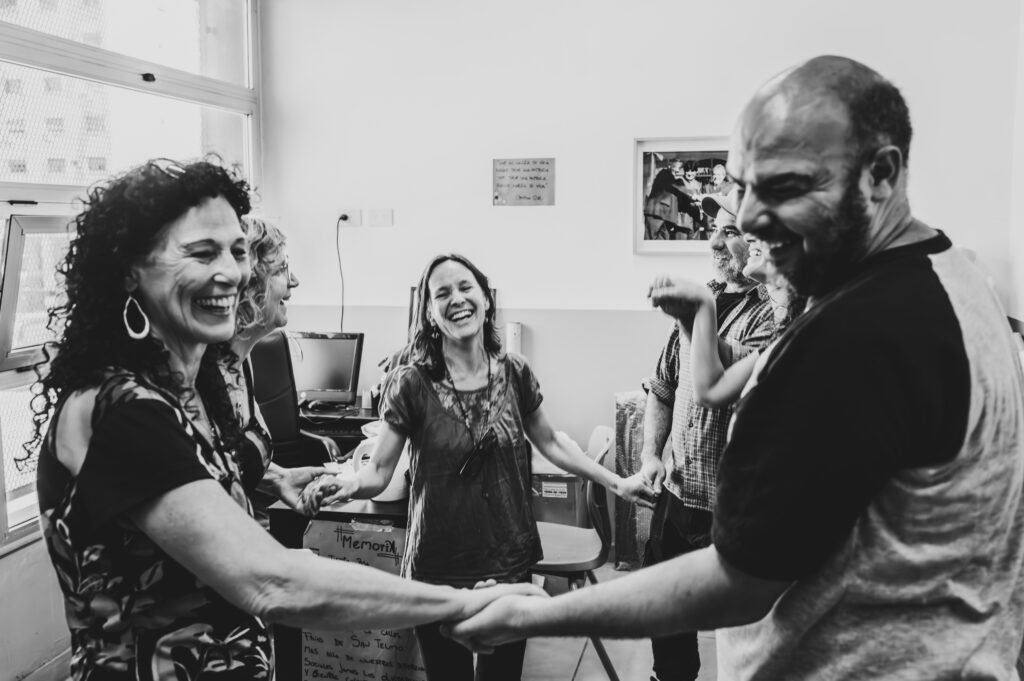
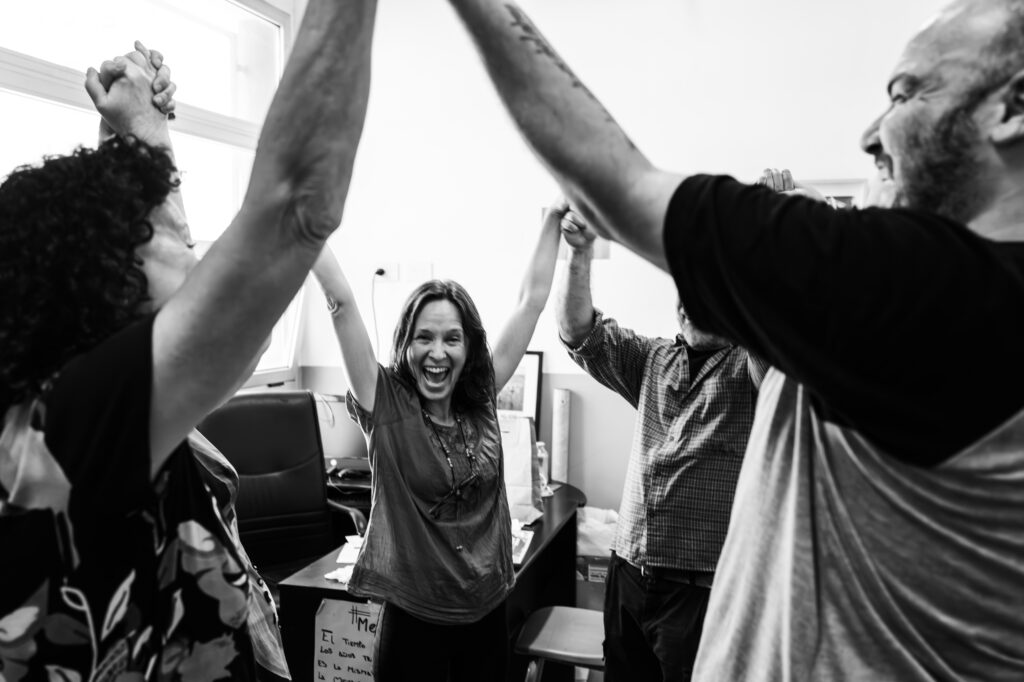
And so ends my itinerary. In reality, what I've felt throughout this journey is that Isauro's pedagogical project rests on four pillars, not three: Teaching, Art, Work... and Love.
Love, in all its forms: respect, listening, adaptation. A selfless but demanding love, which is not charity, which is not at the service of an ideology, but at the service of the integration of each individual. Tenderness is present in every testimony, on every wall, at every moment. I felt it myself in the warm welcome I received from students and teachers alike.
Thank you very much, Isauro. I've learned a lot.
STUDENT GALLERY
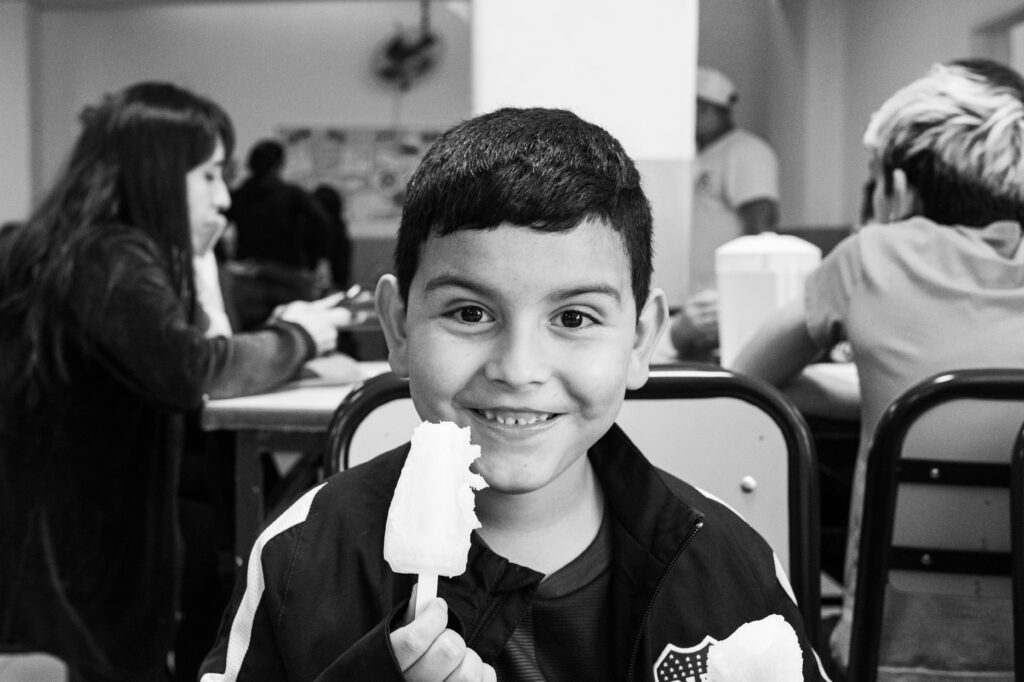
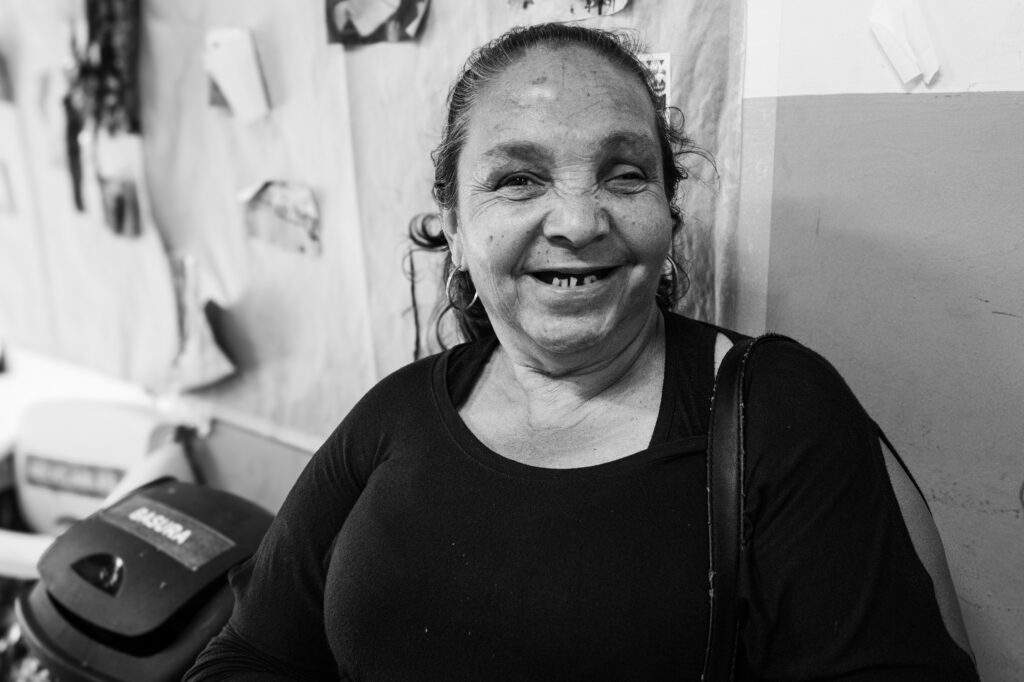
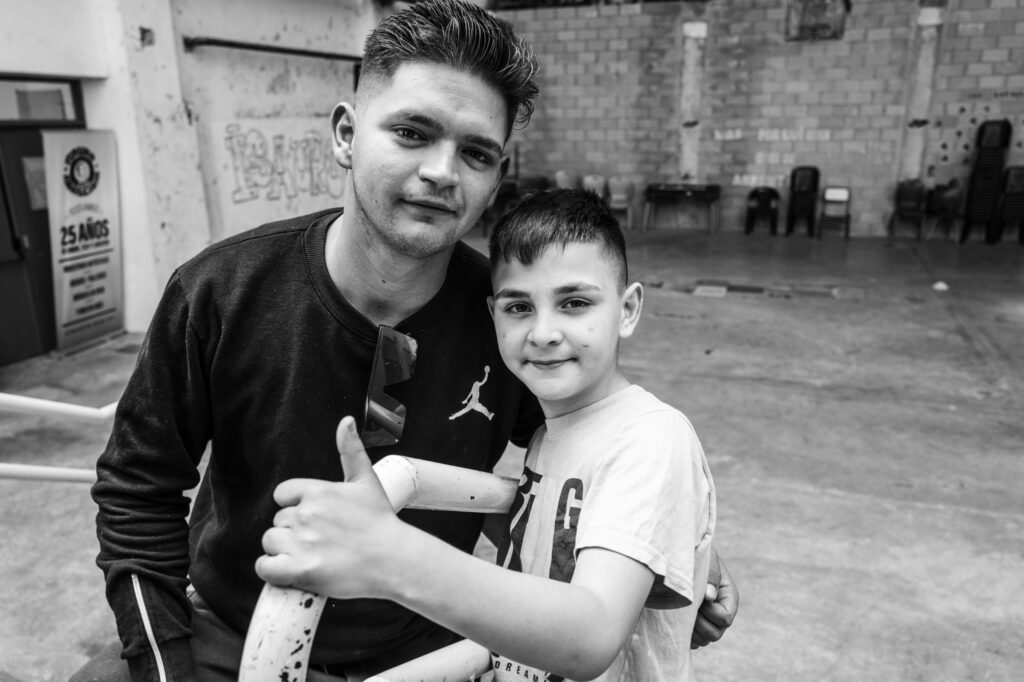
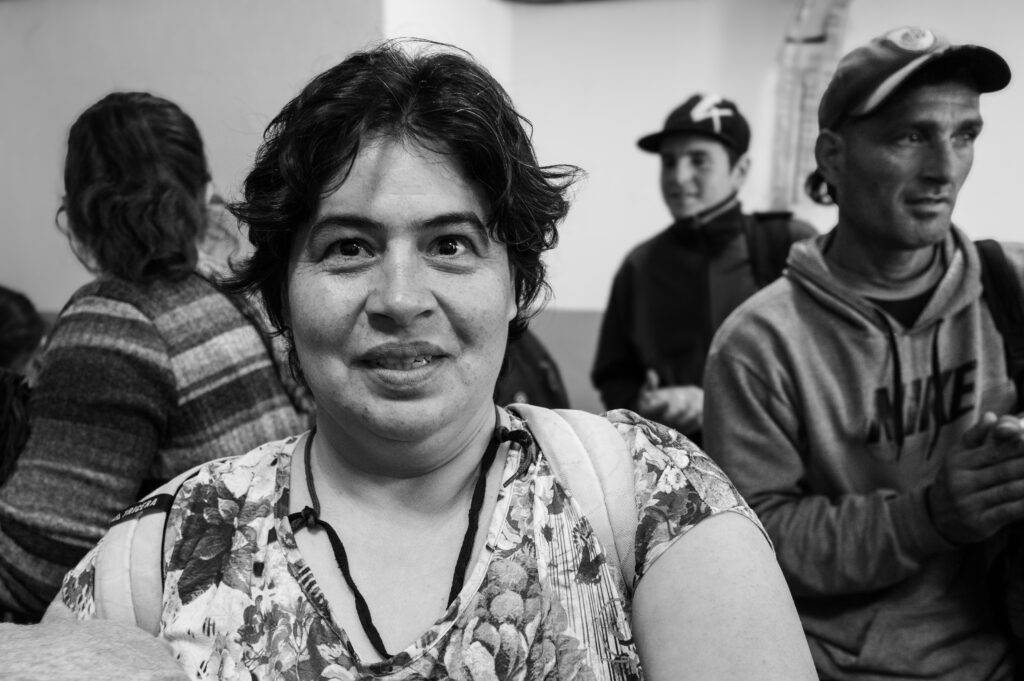
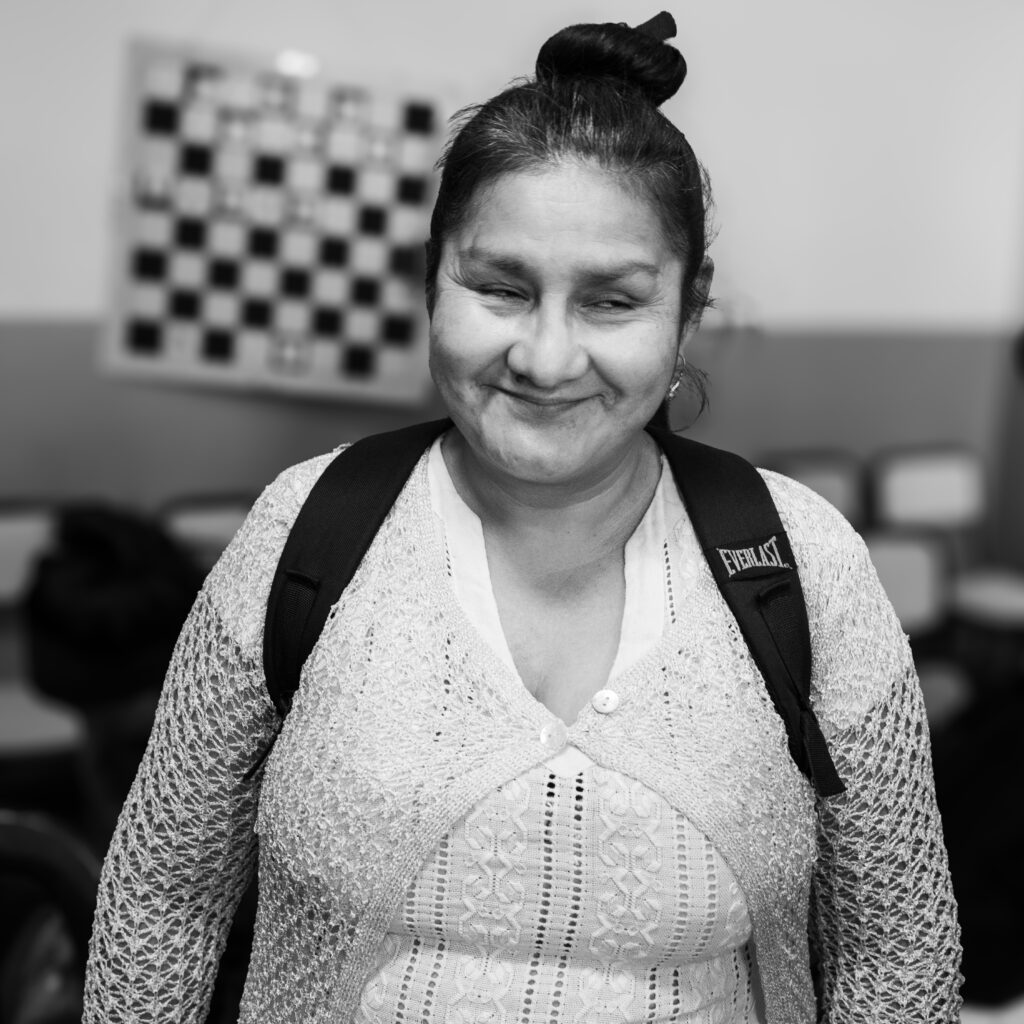
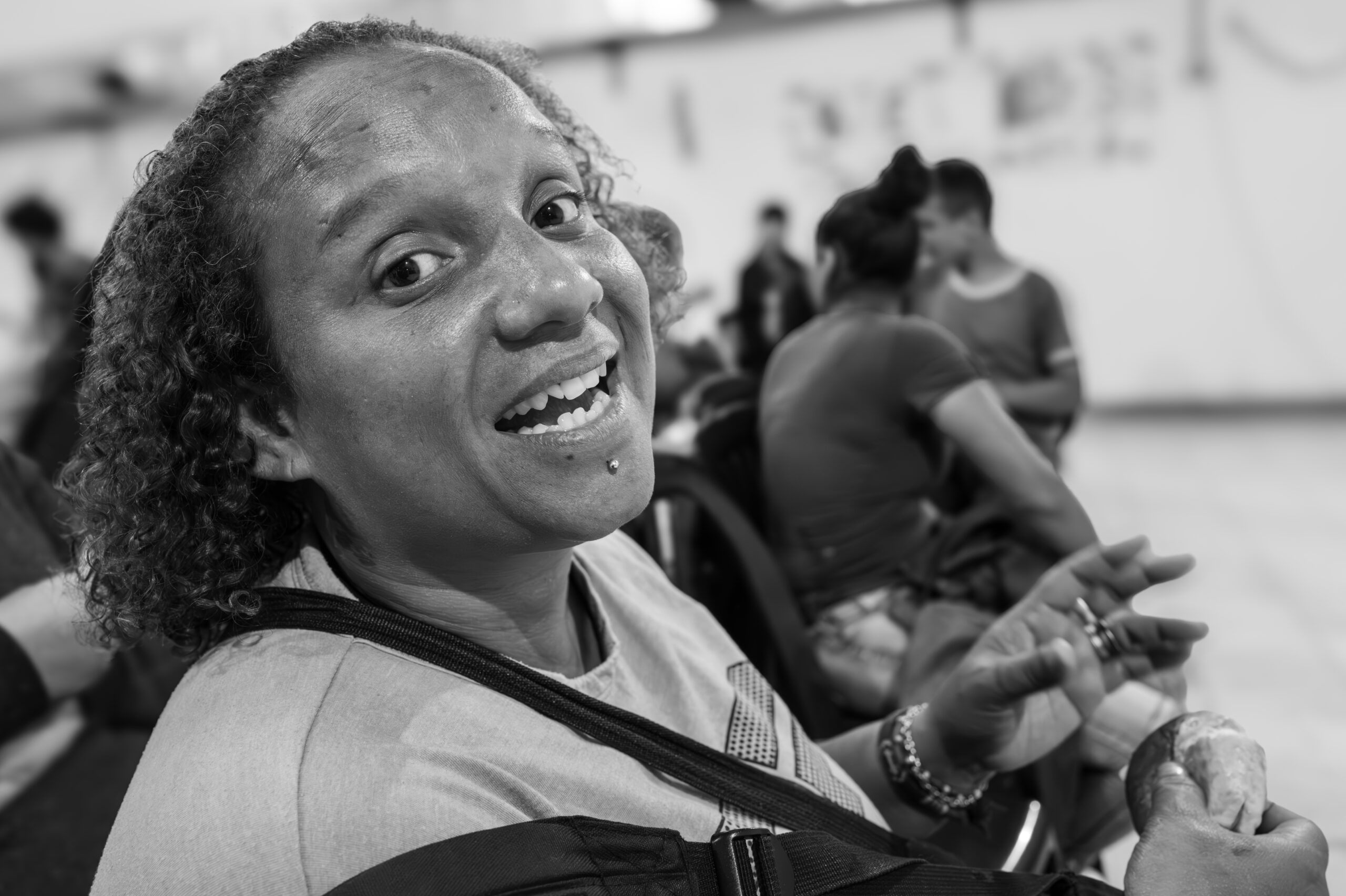

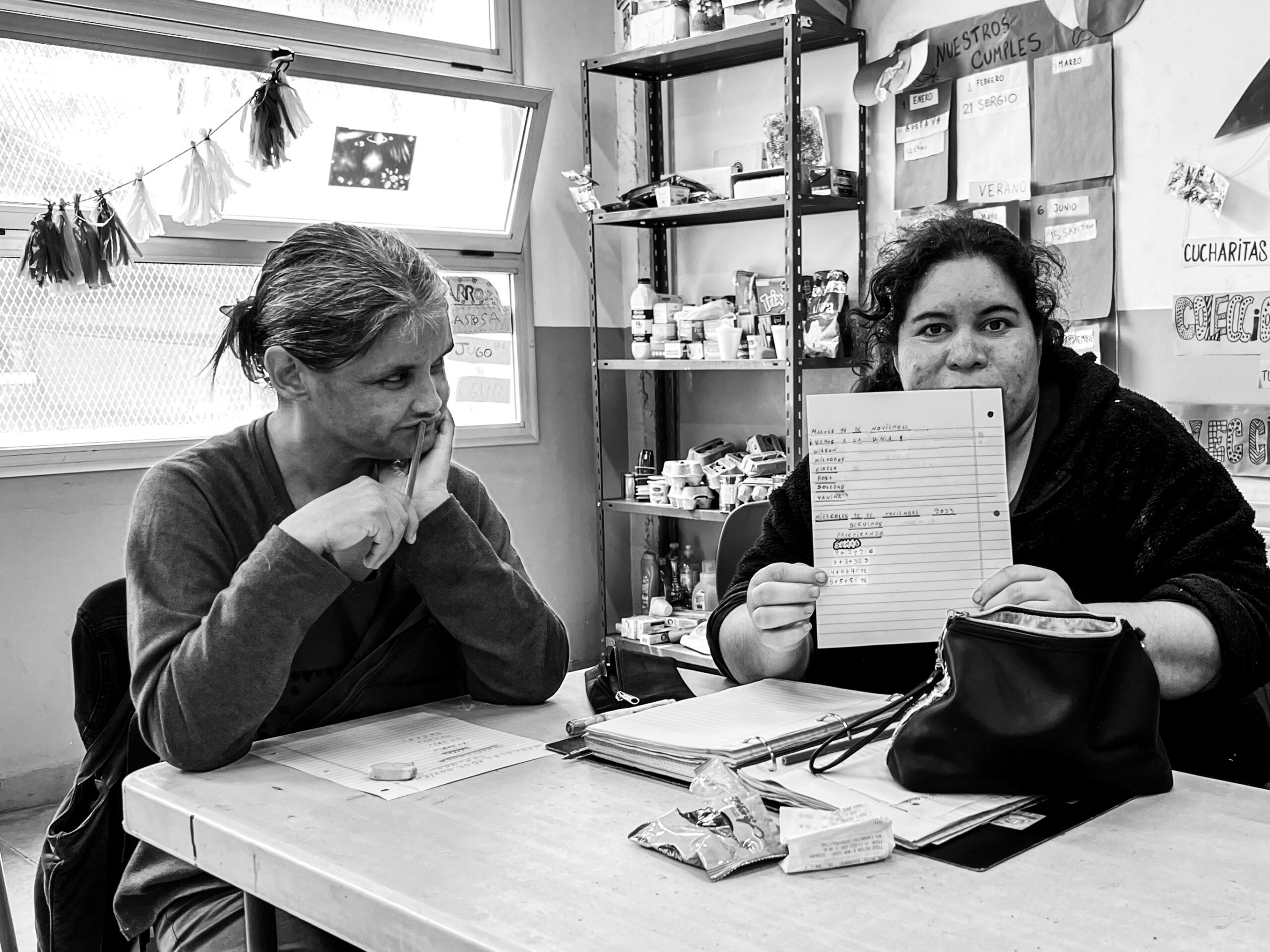
Leave a Reply